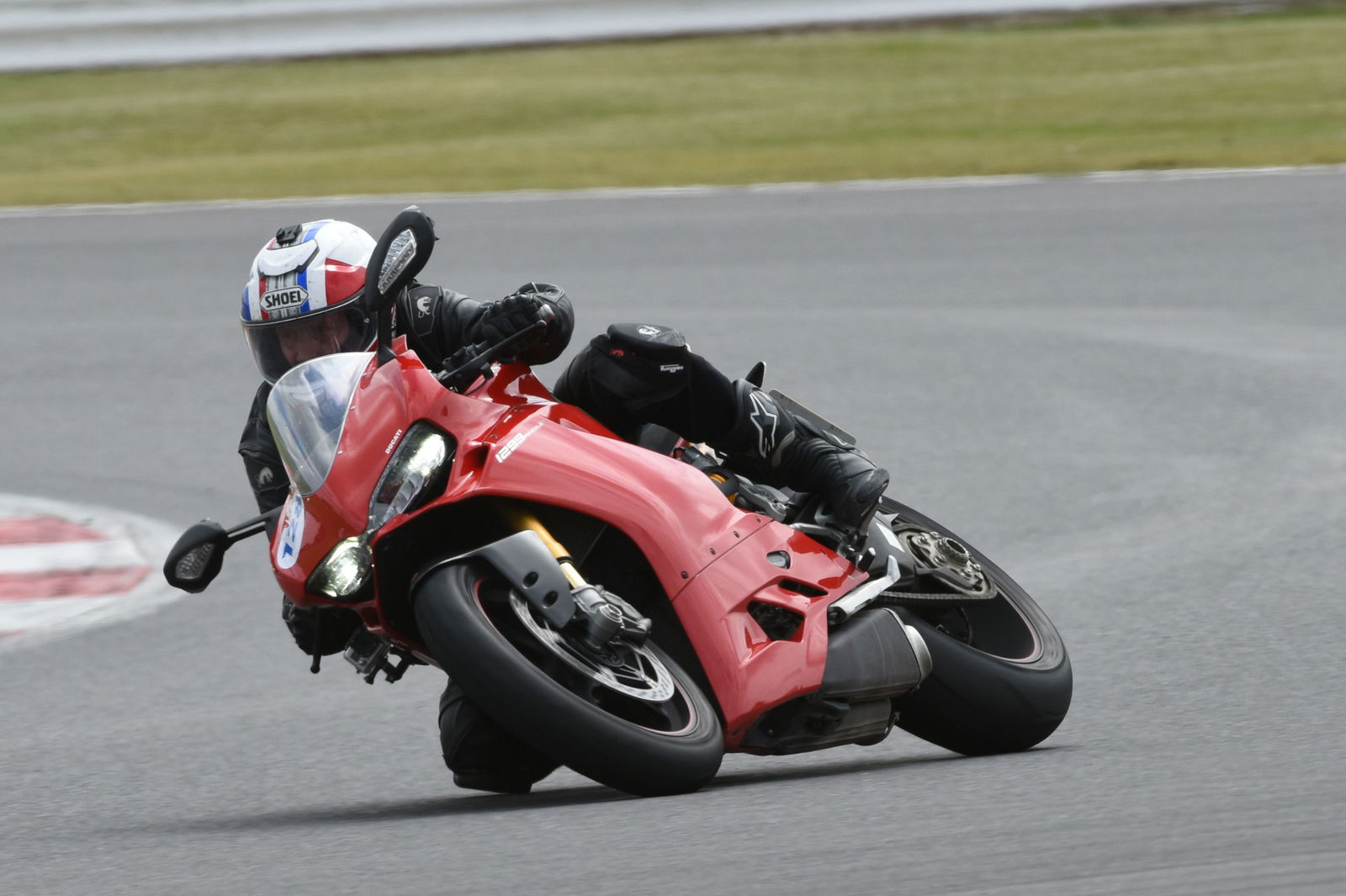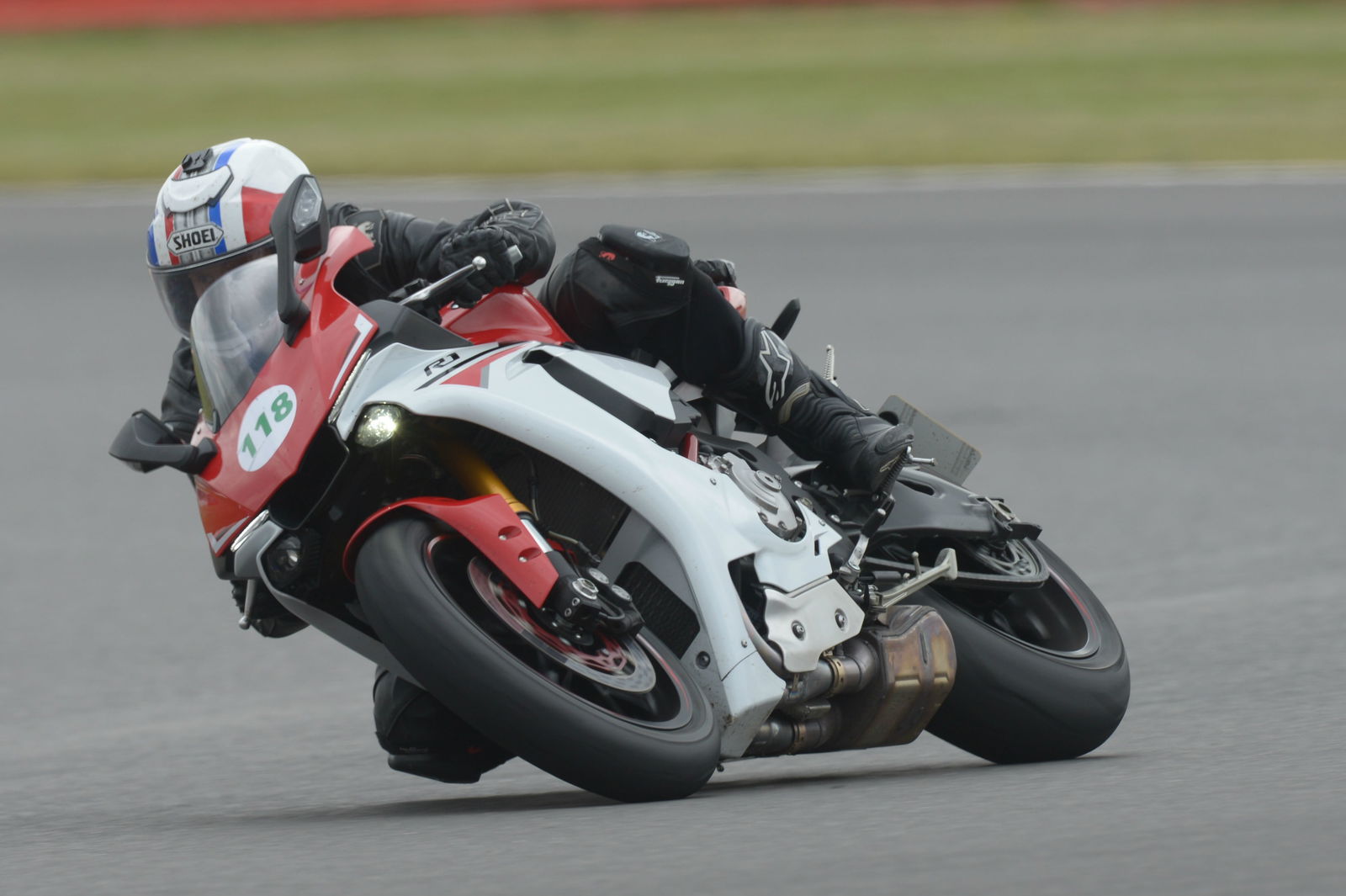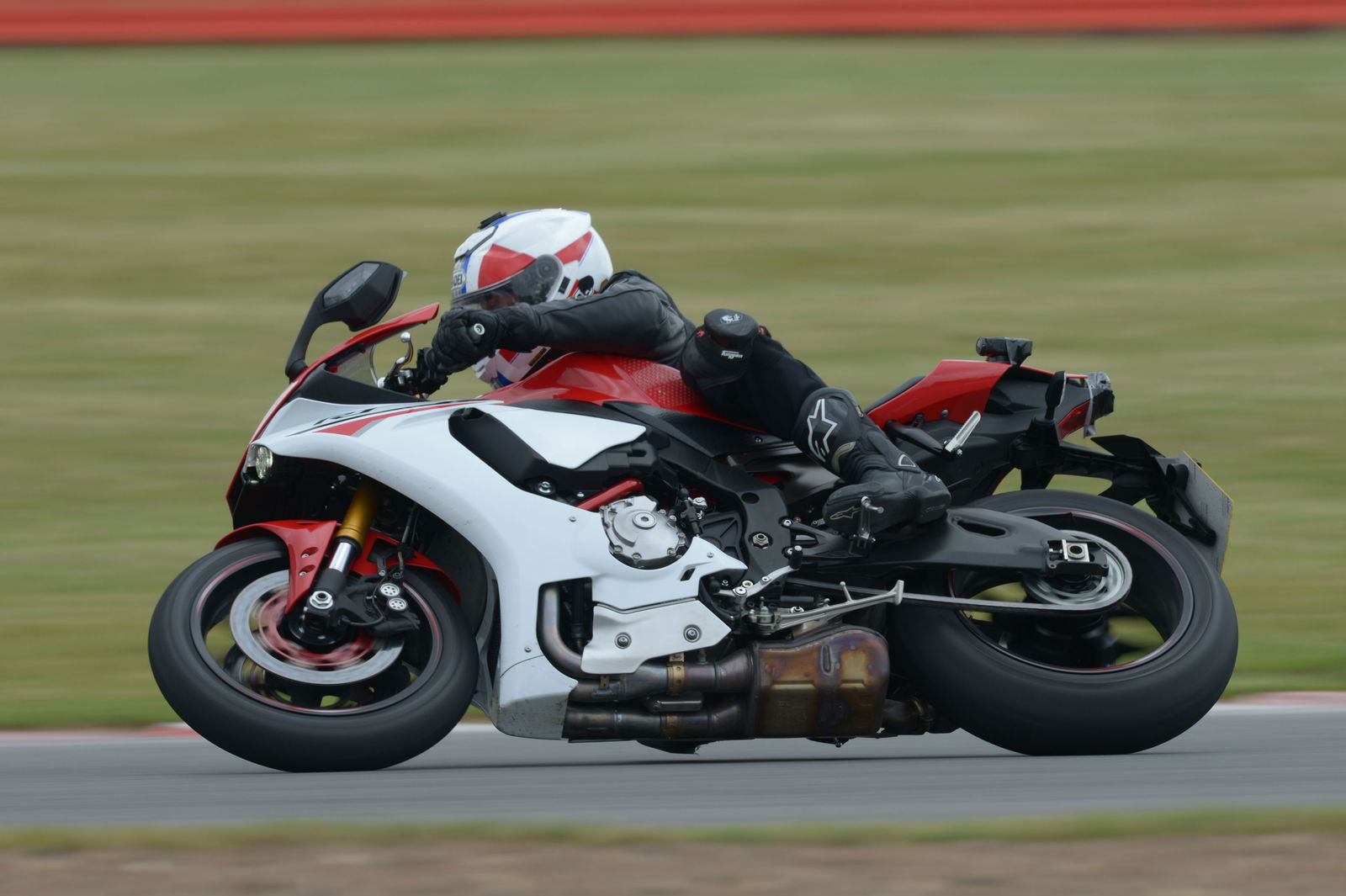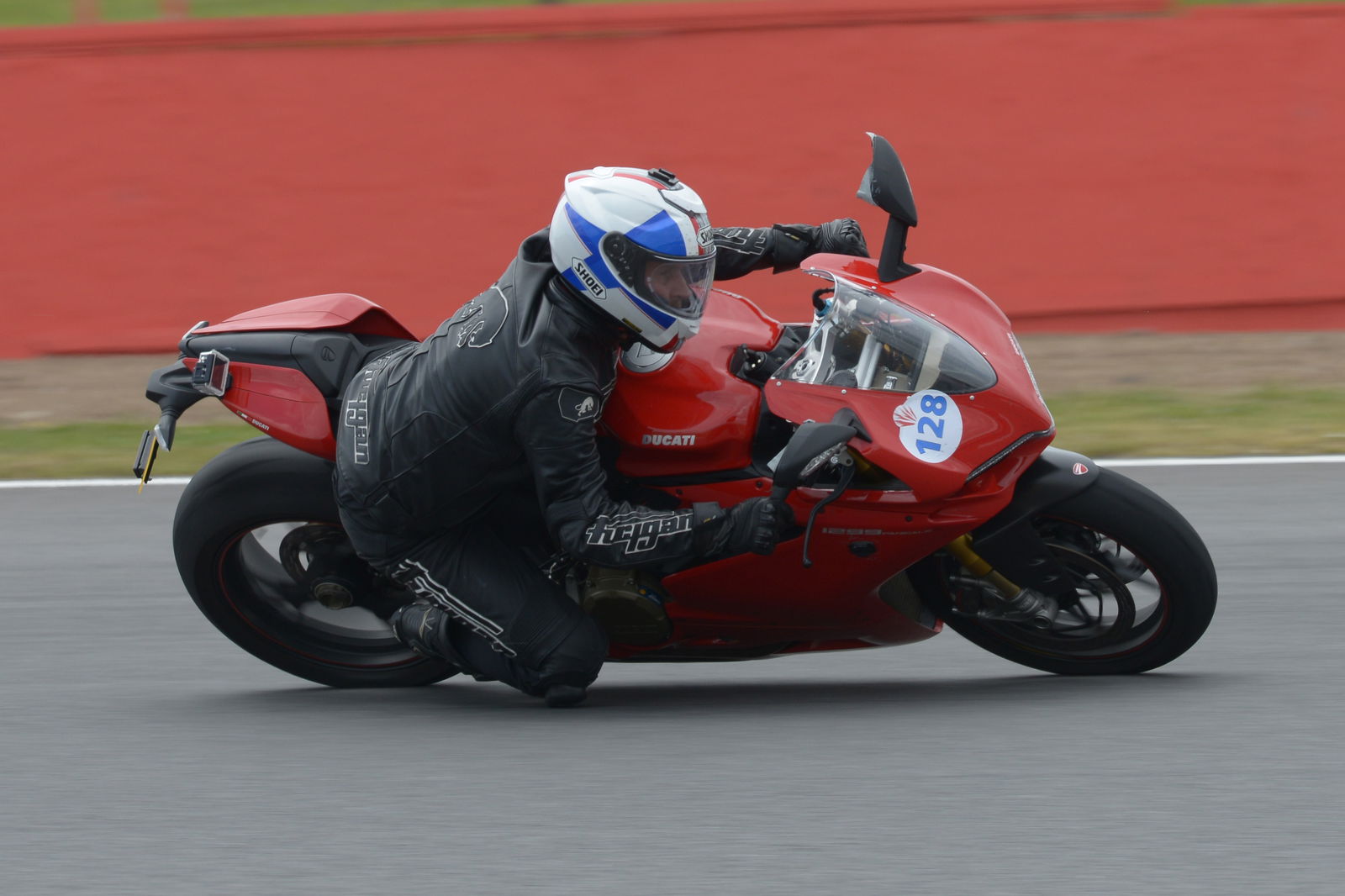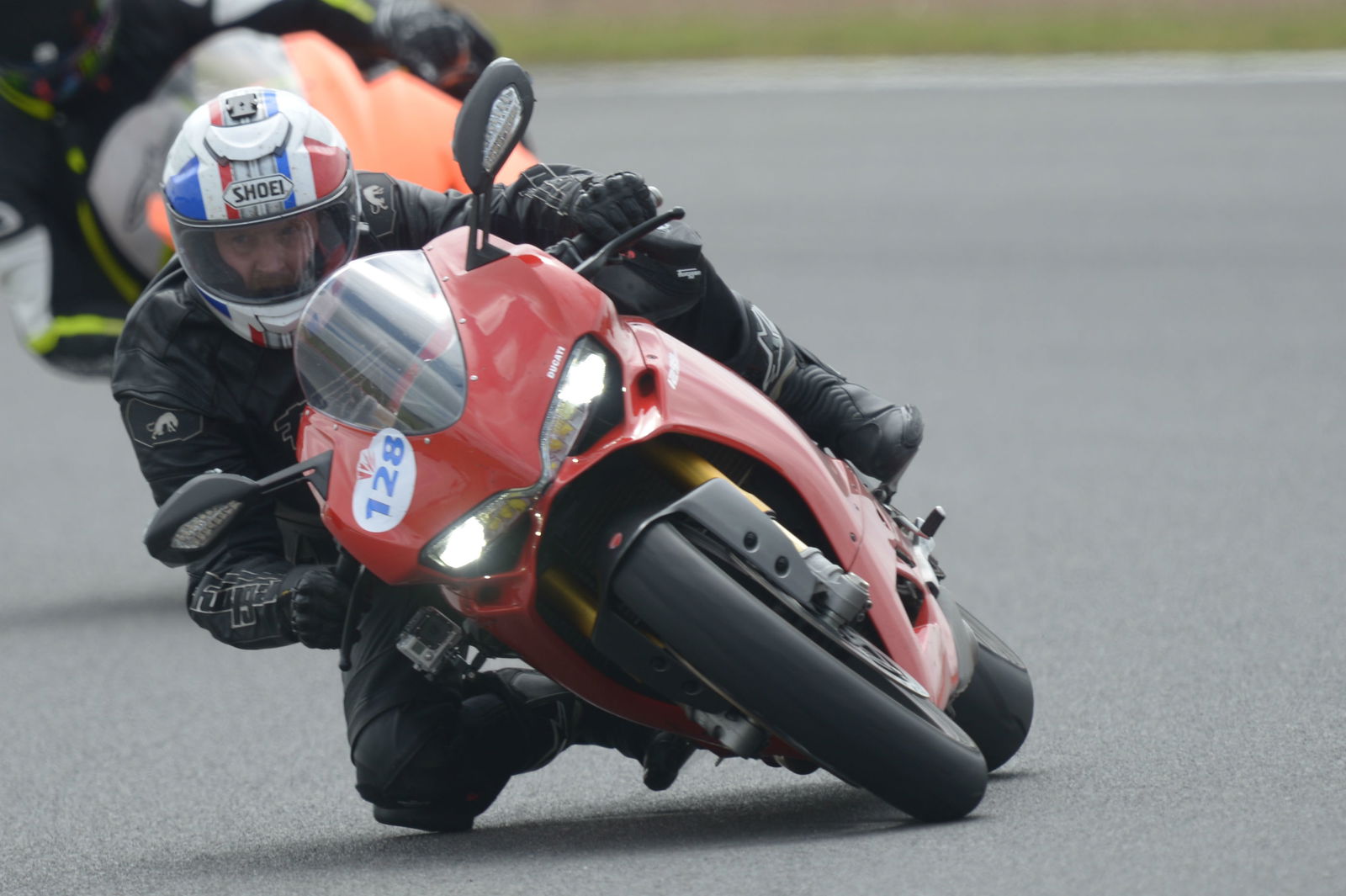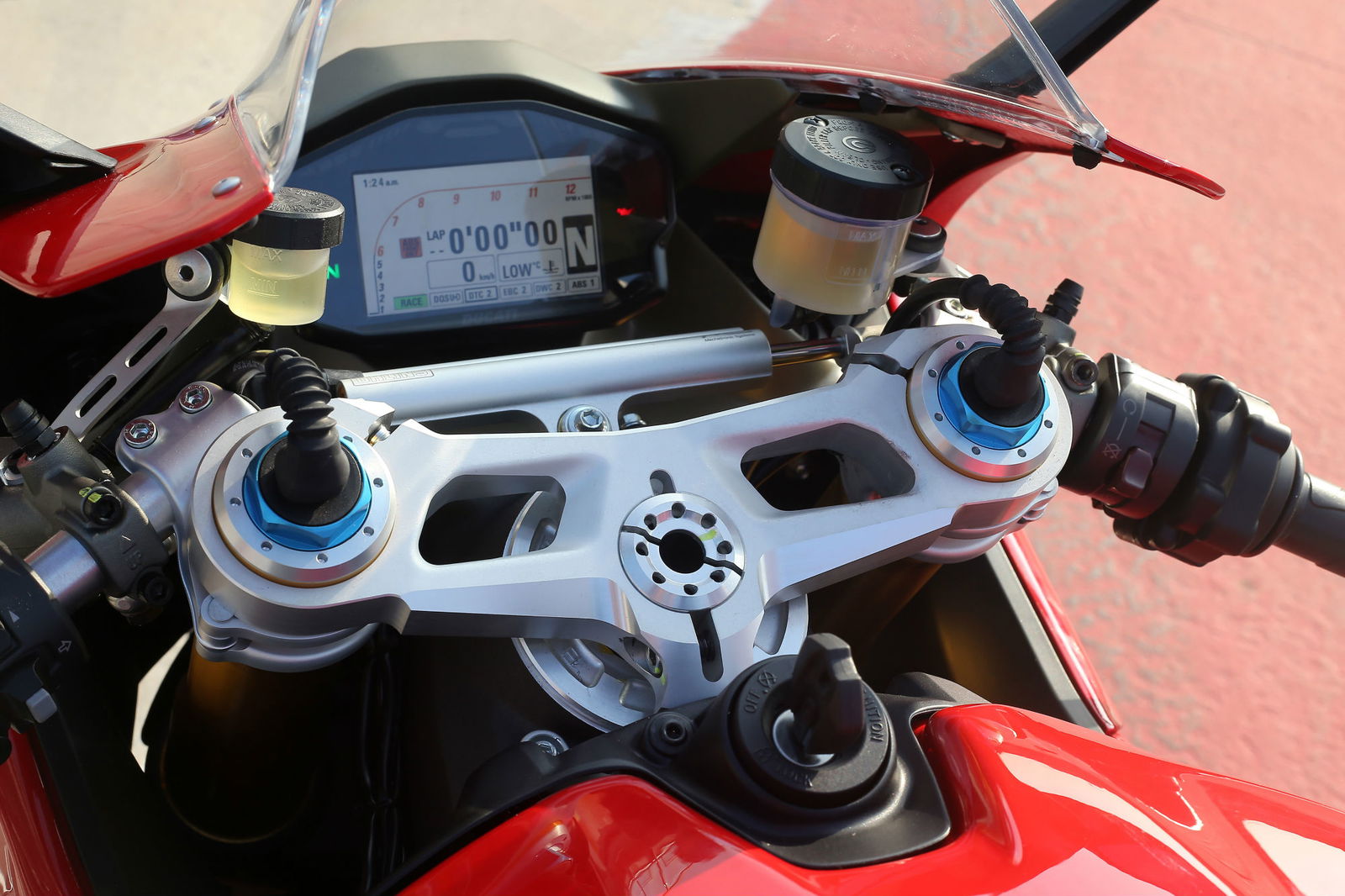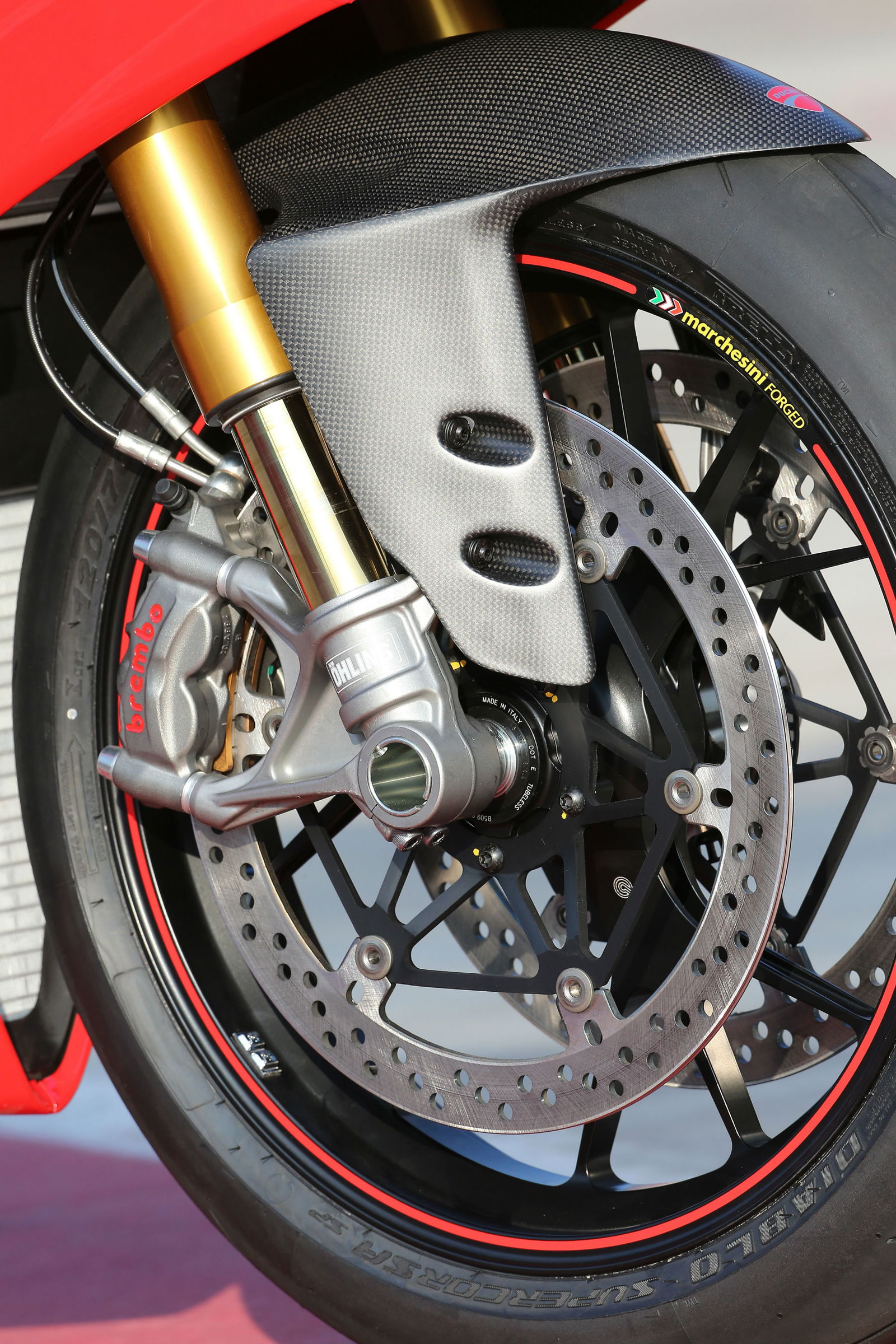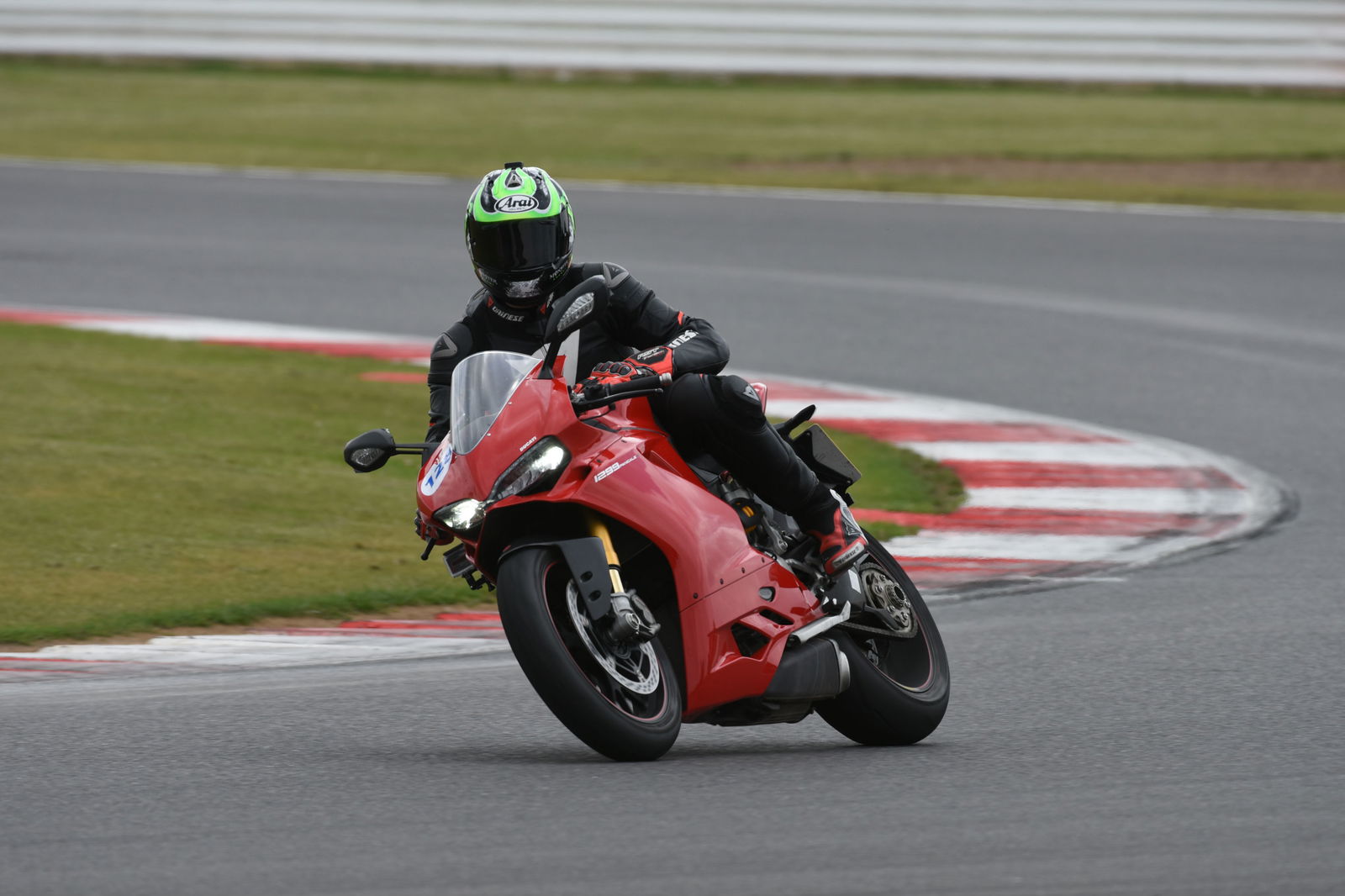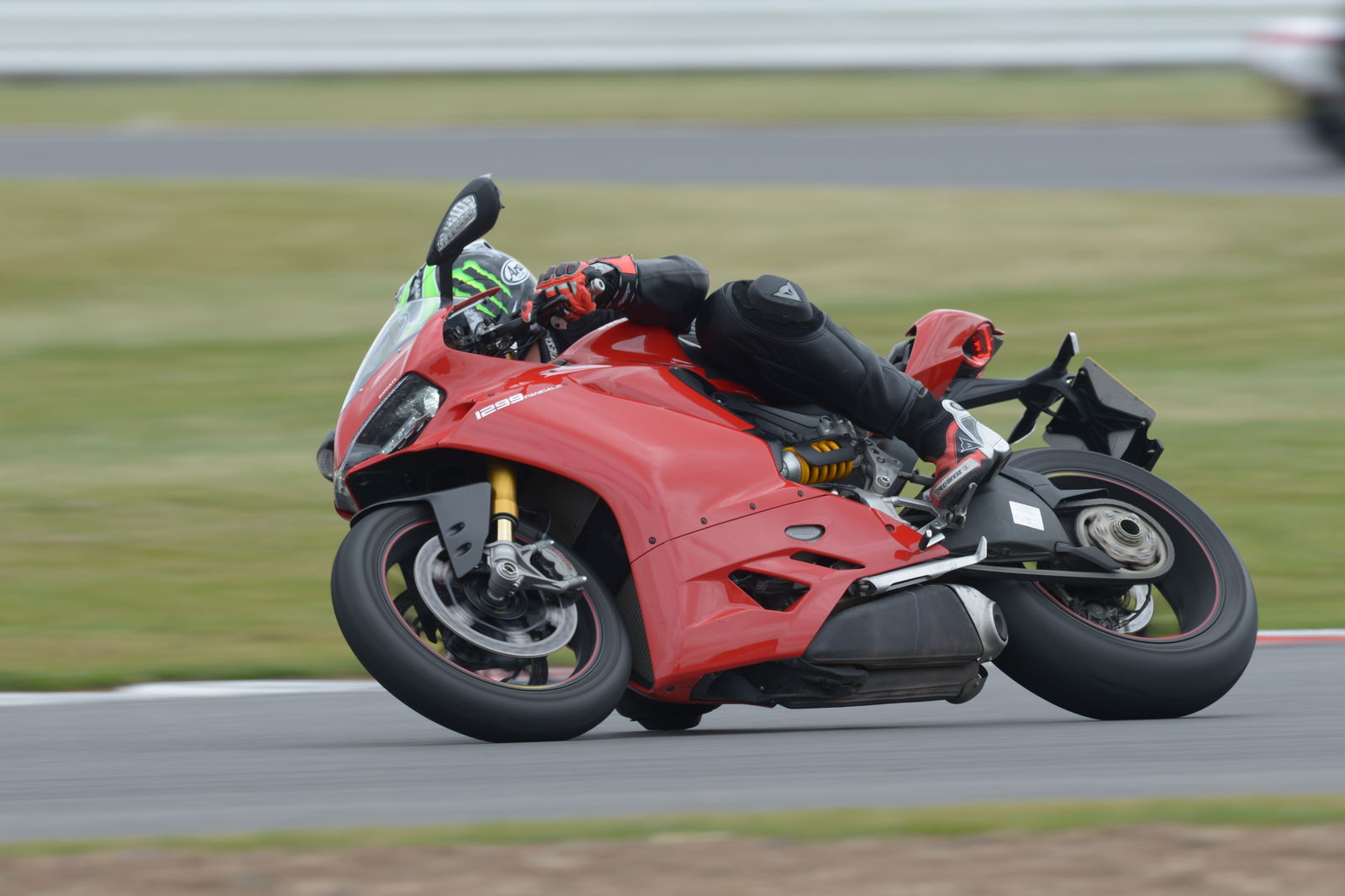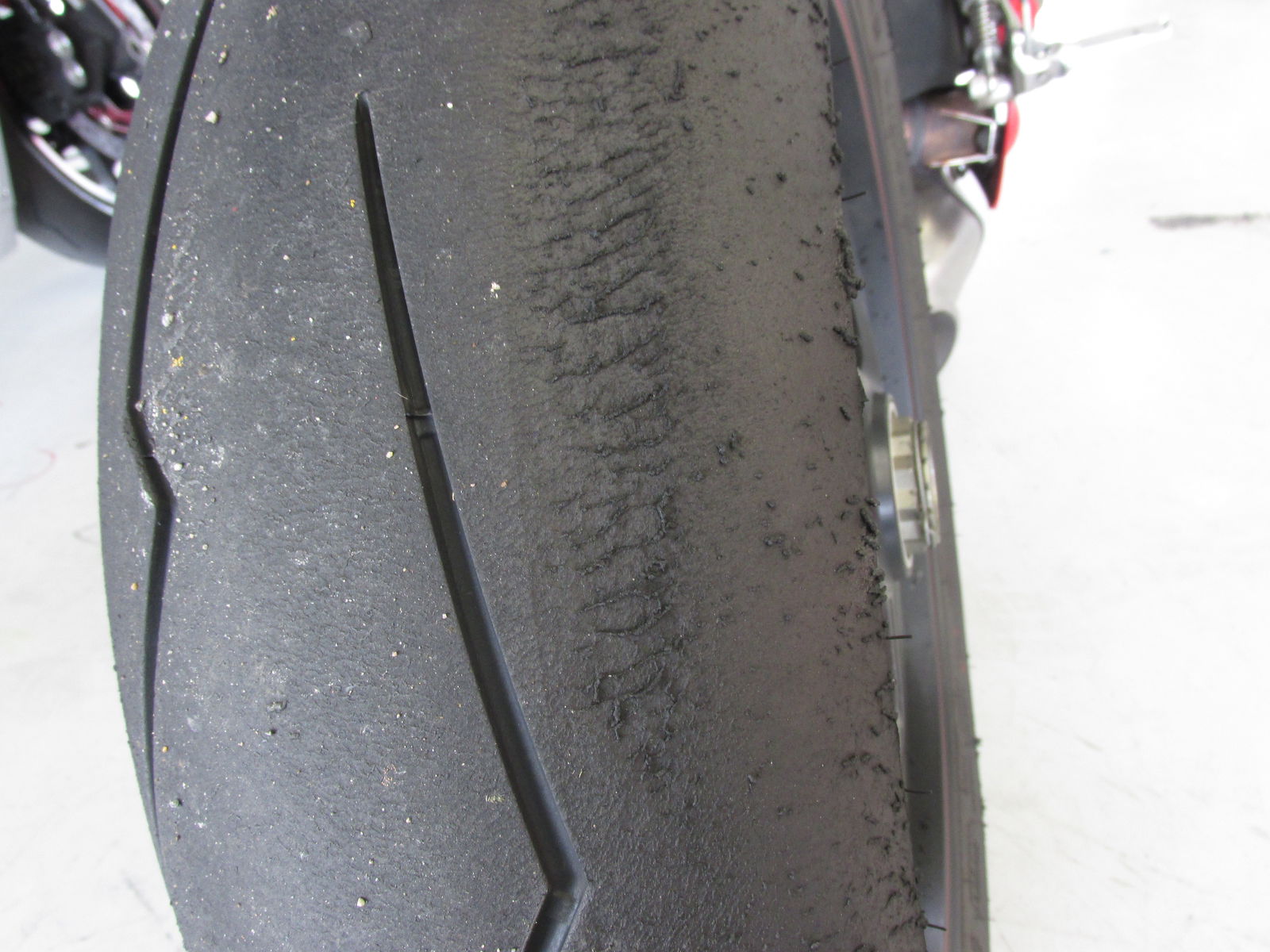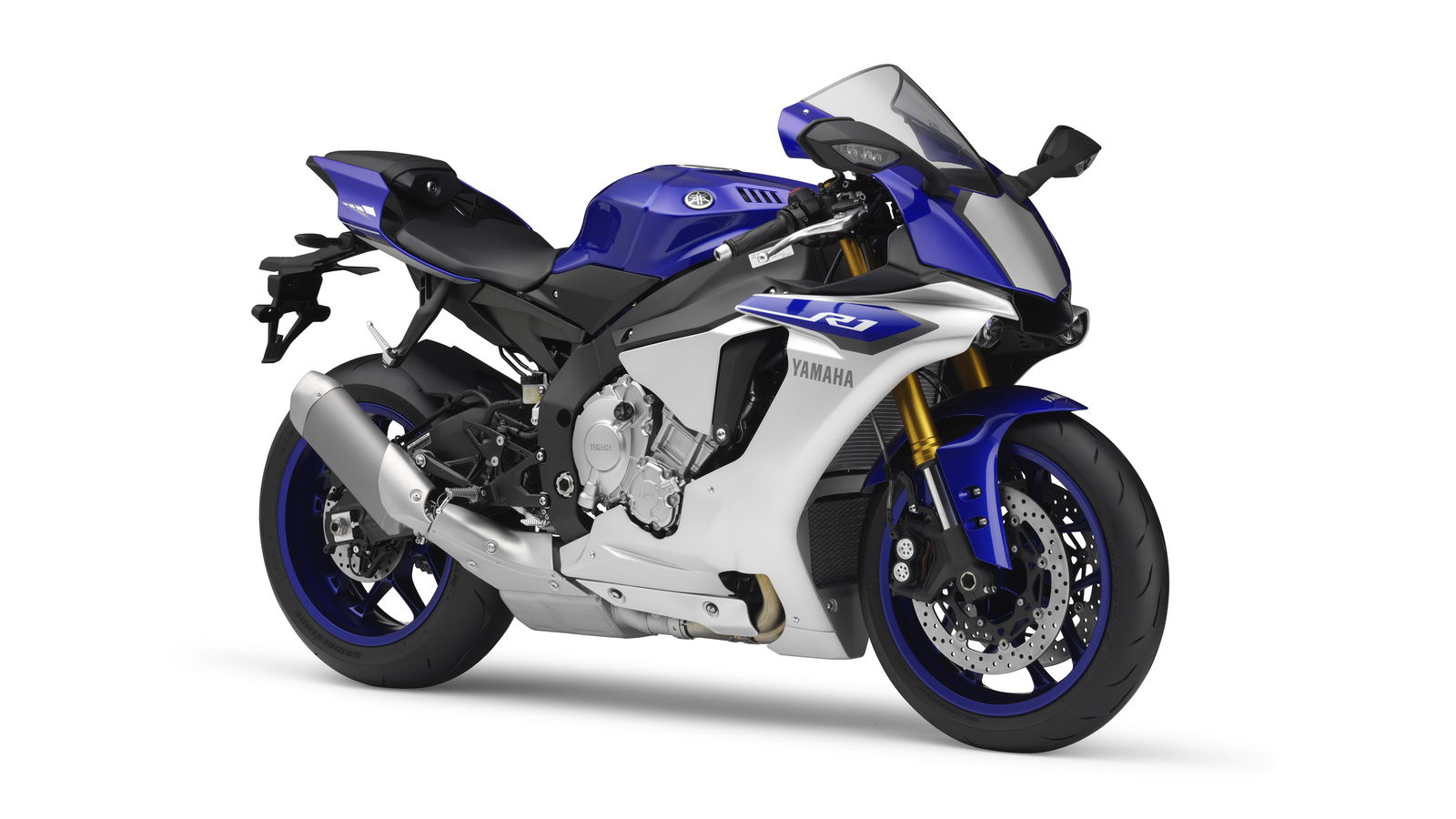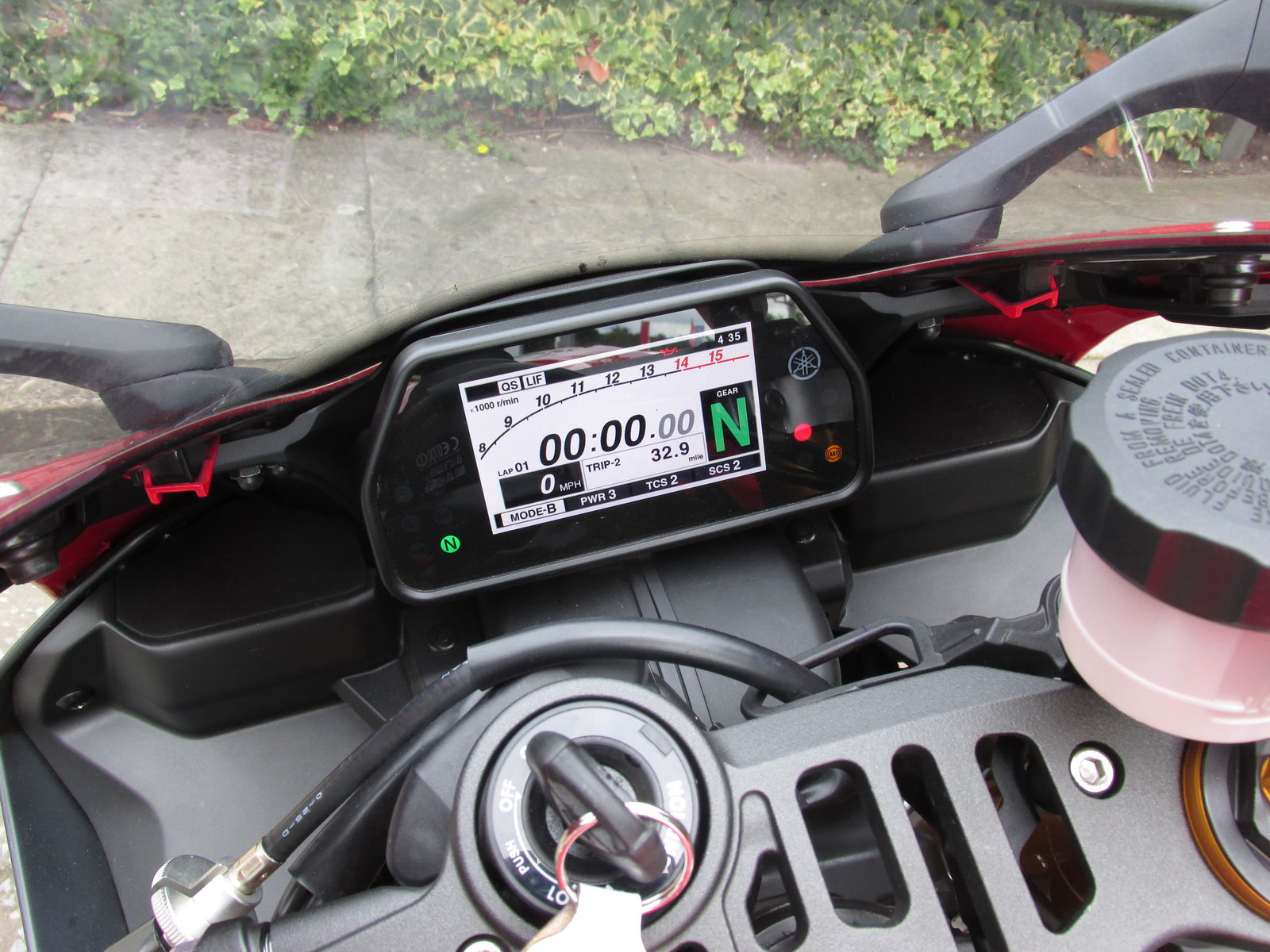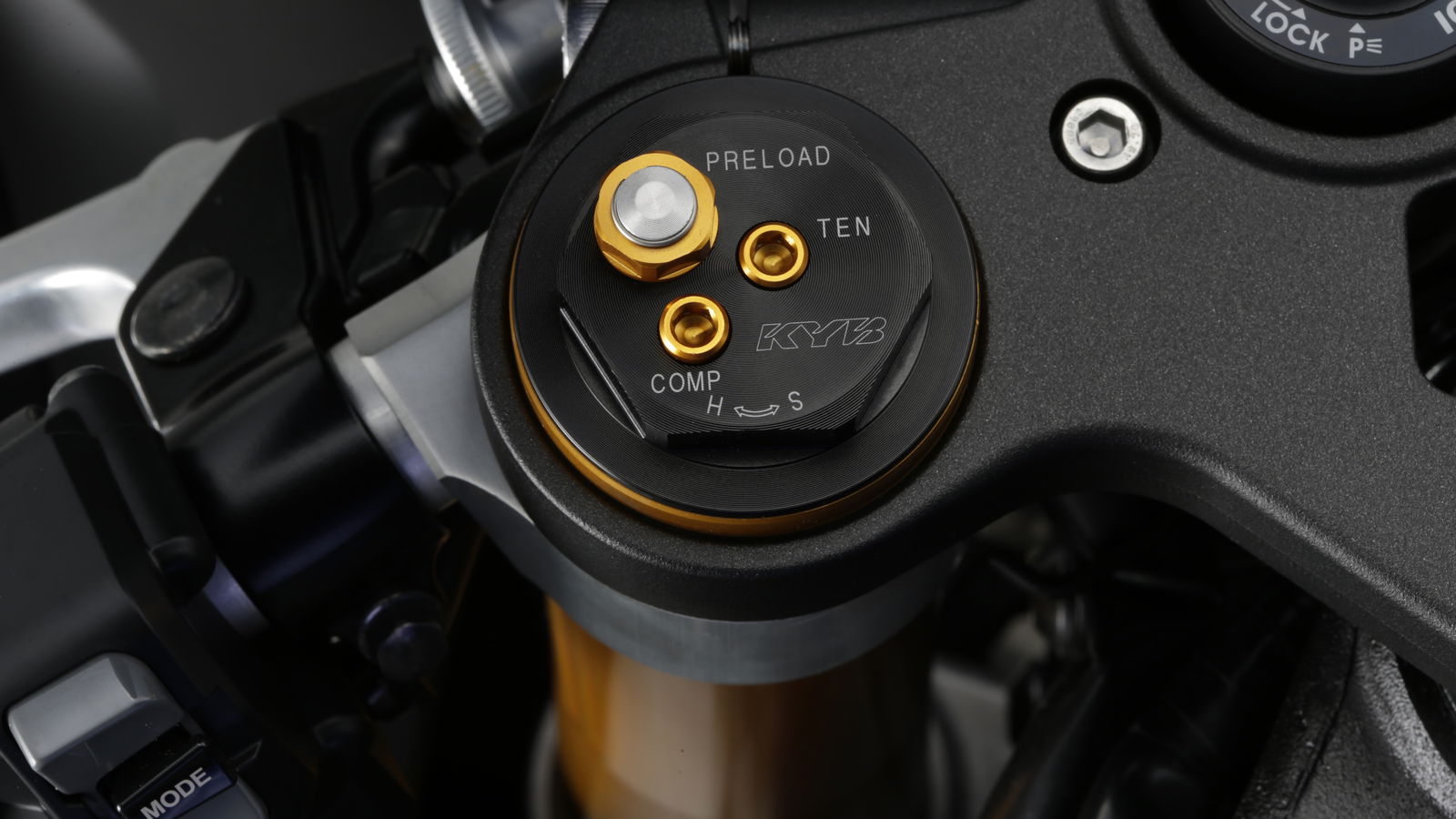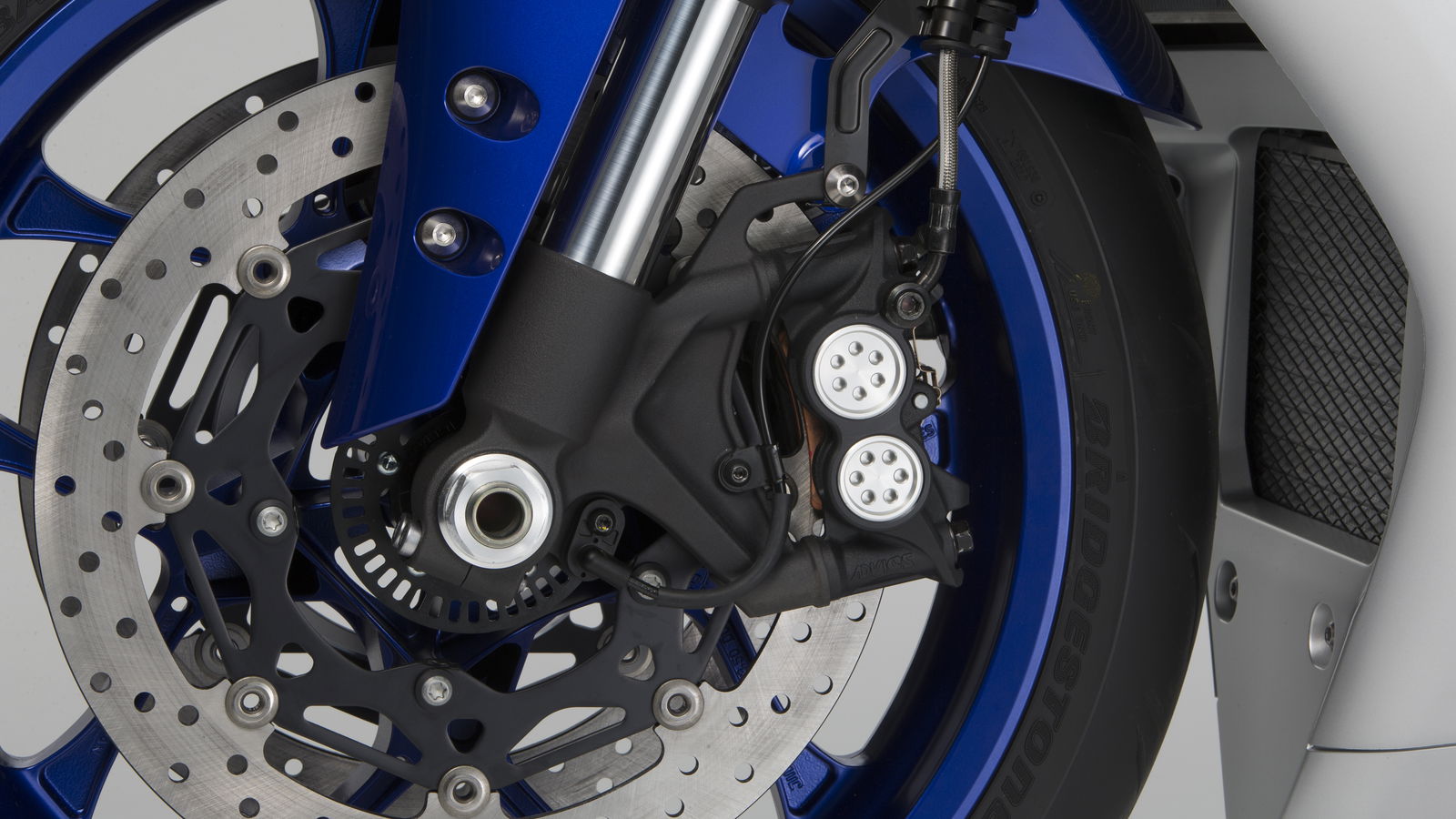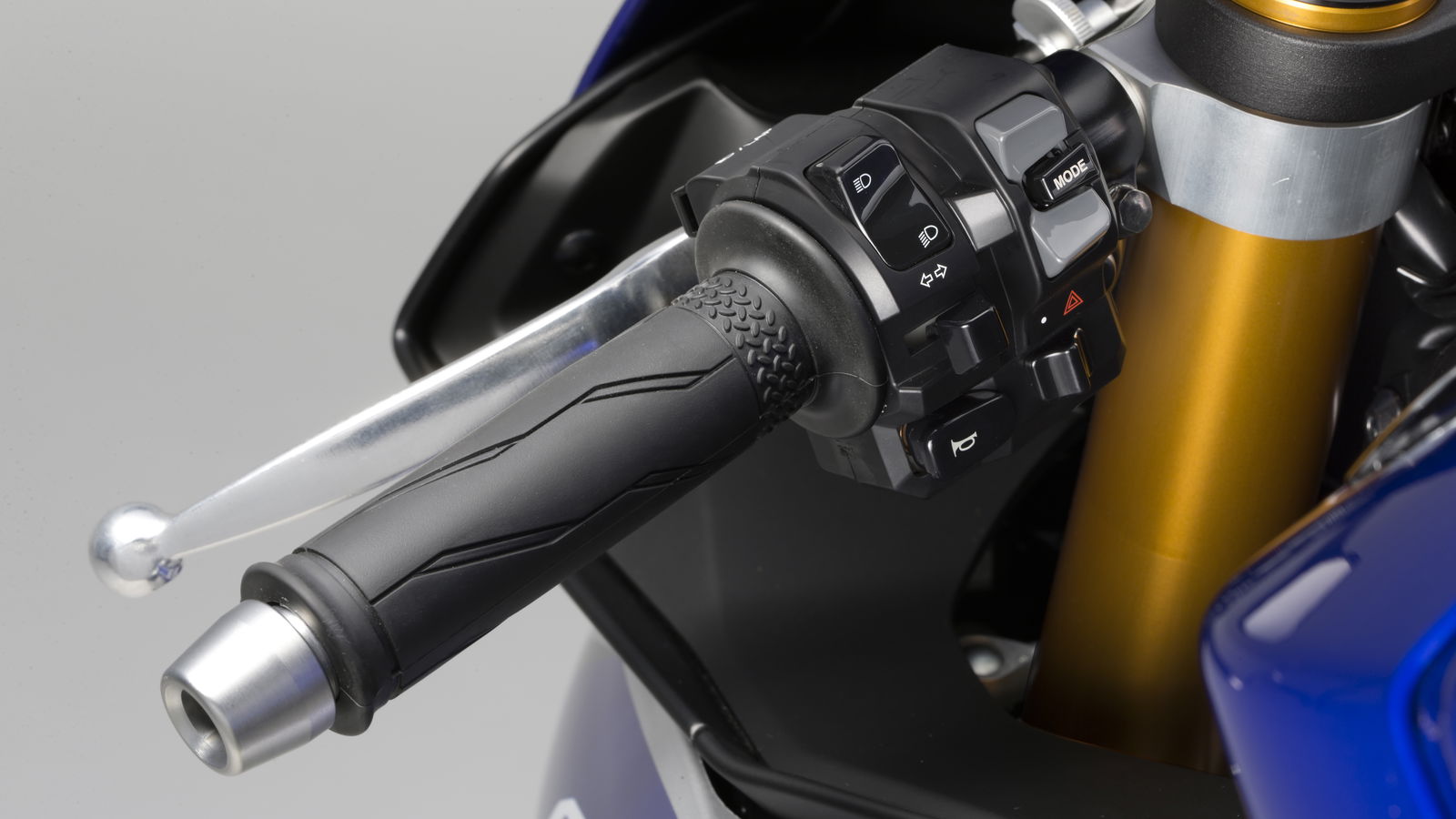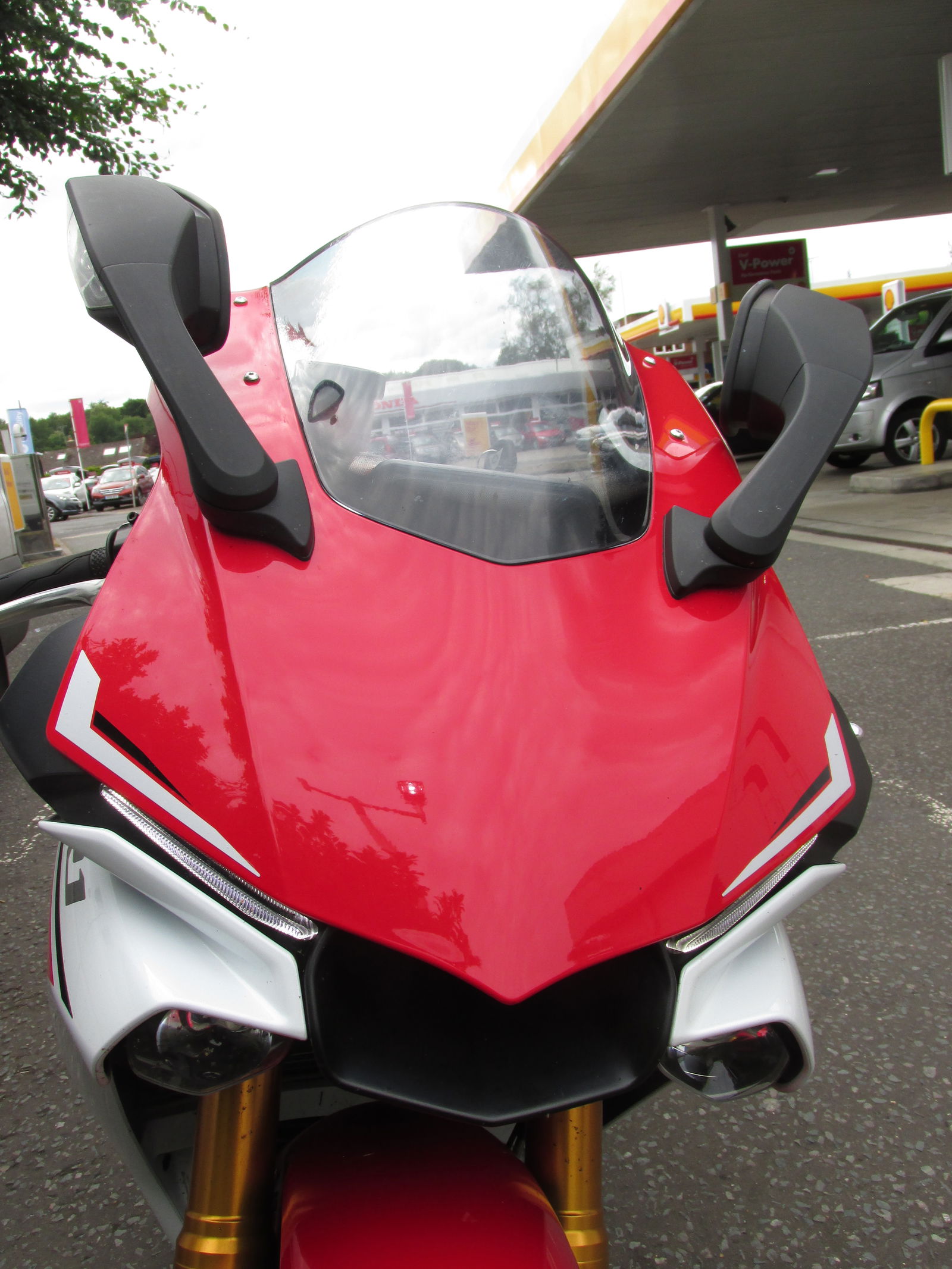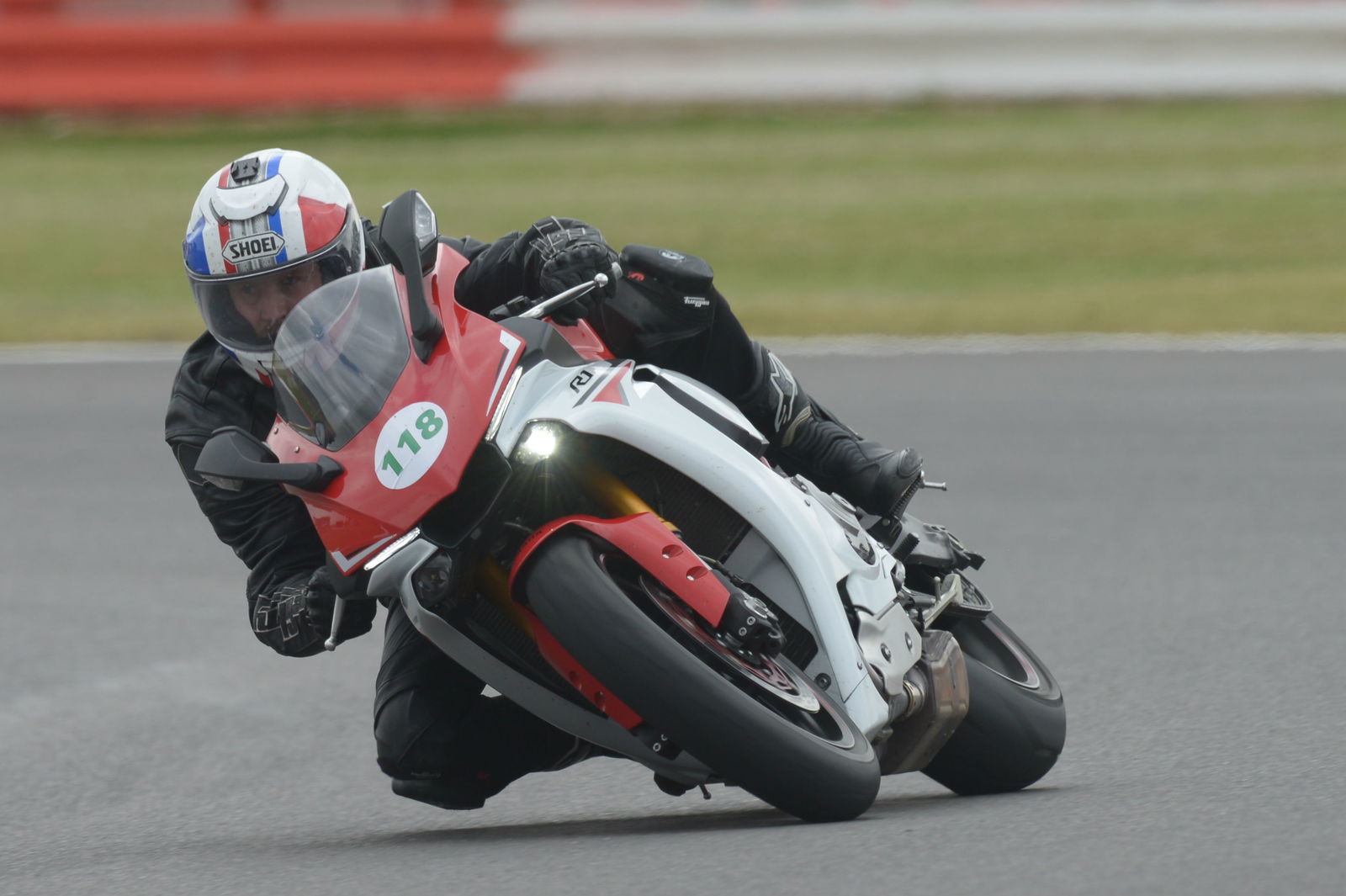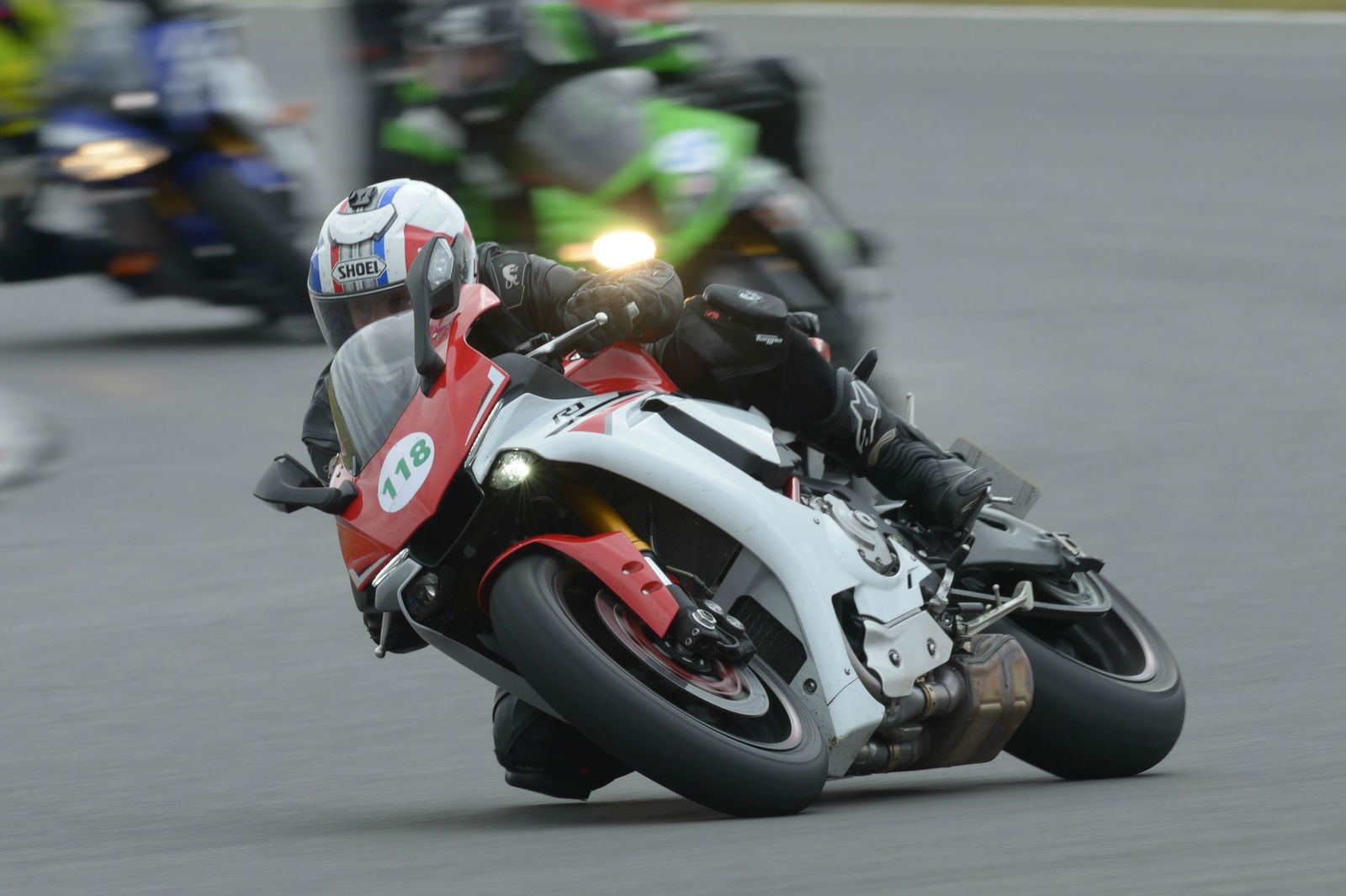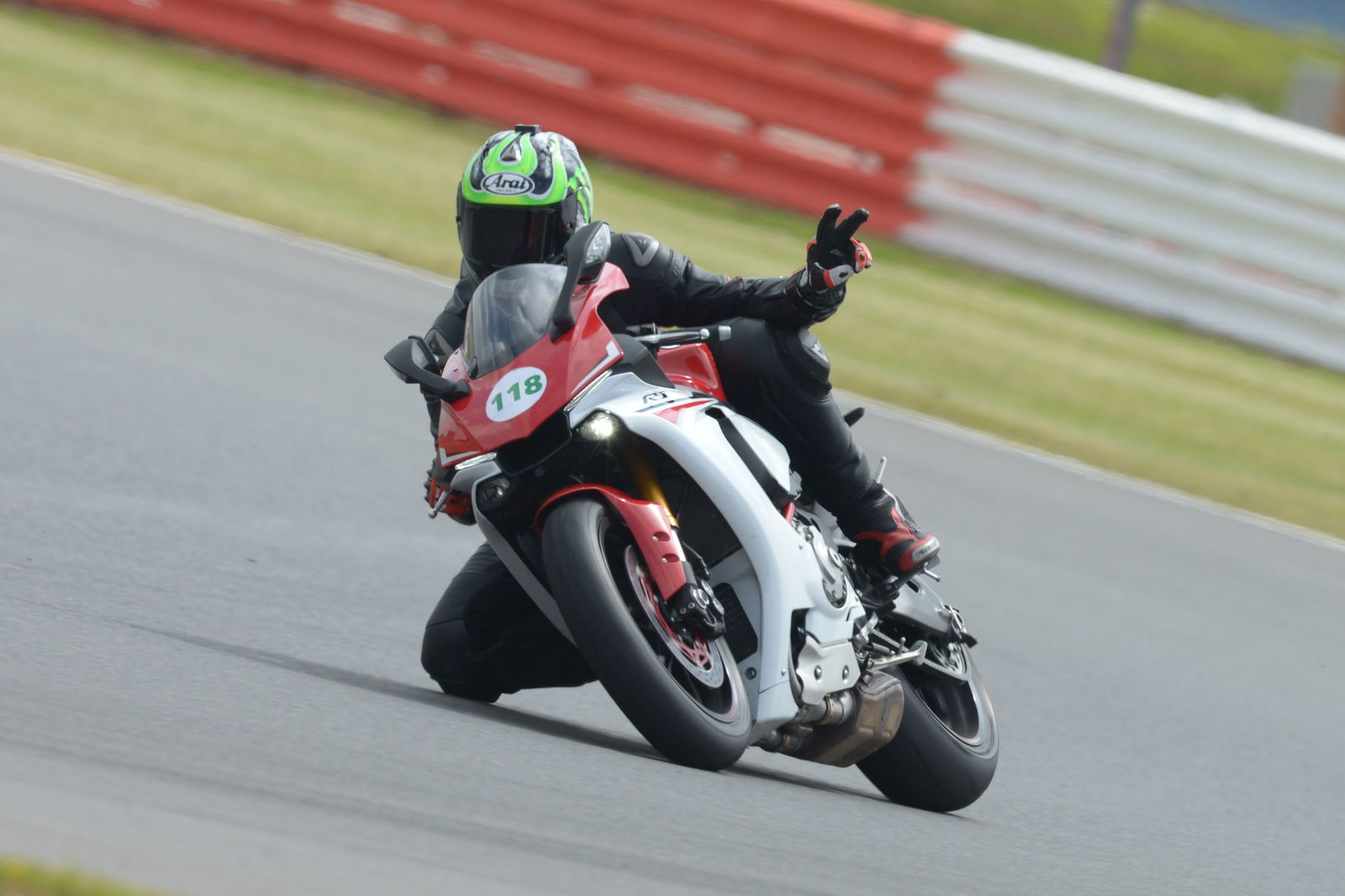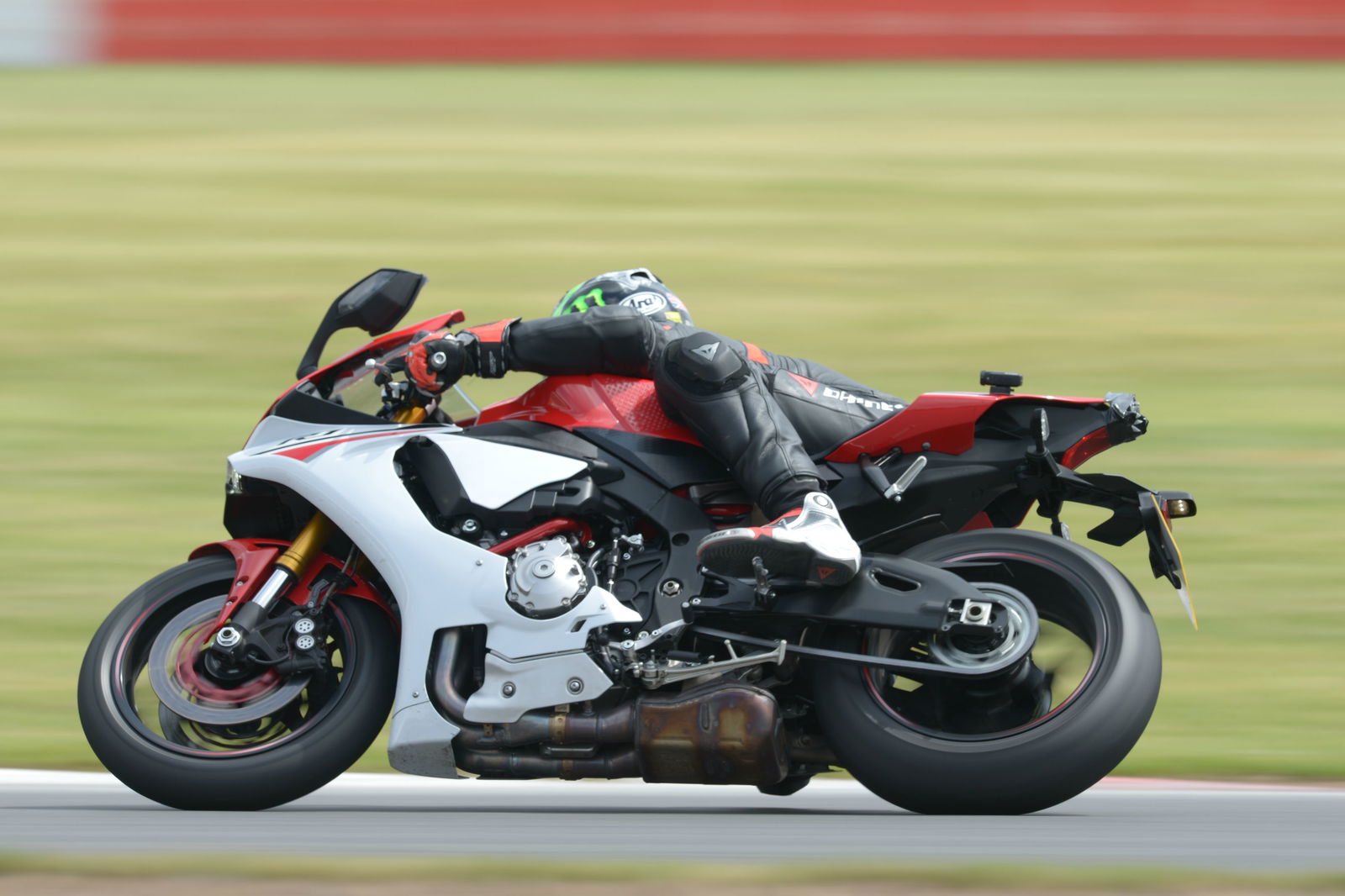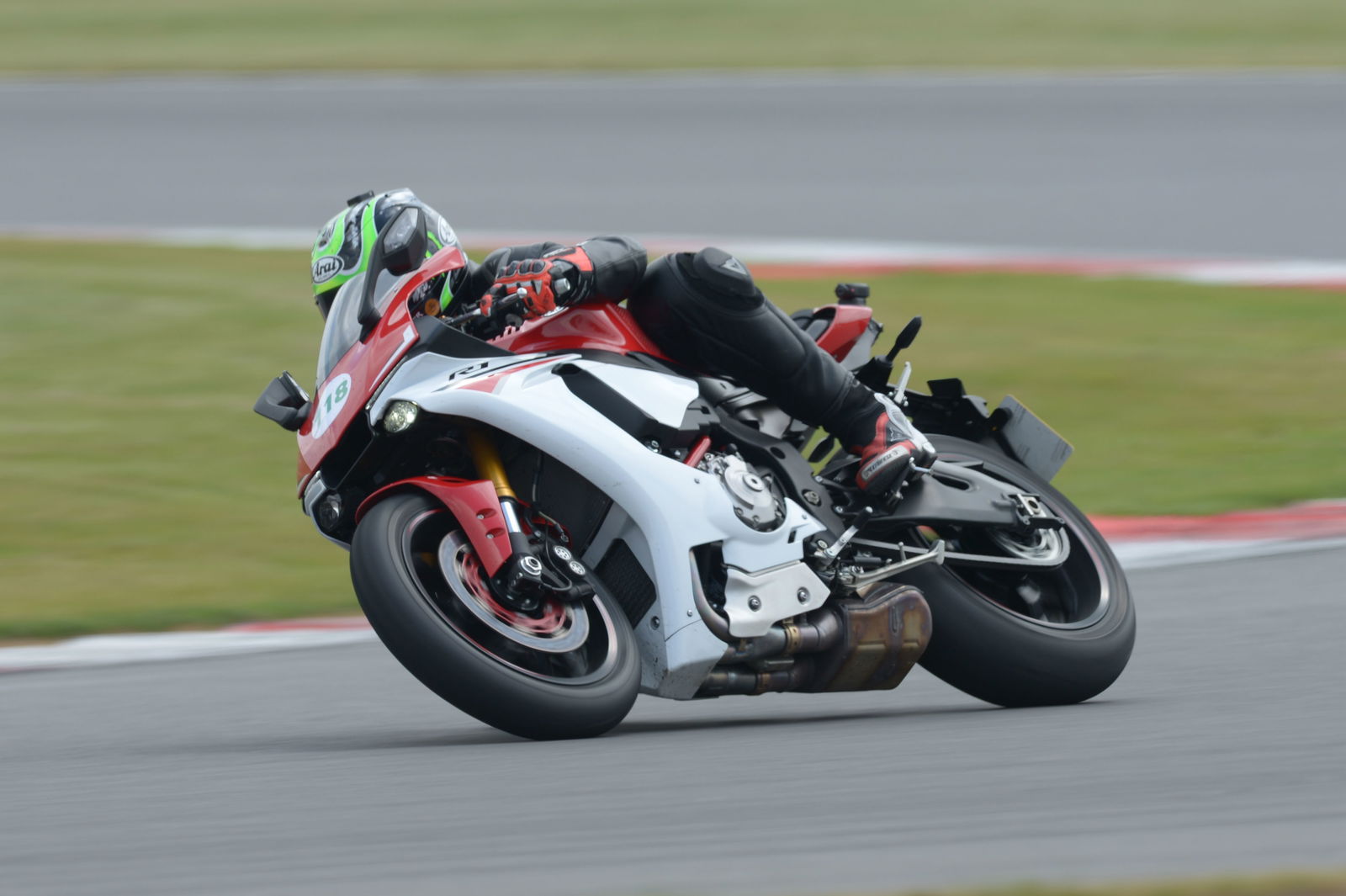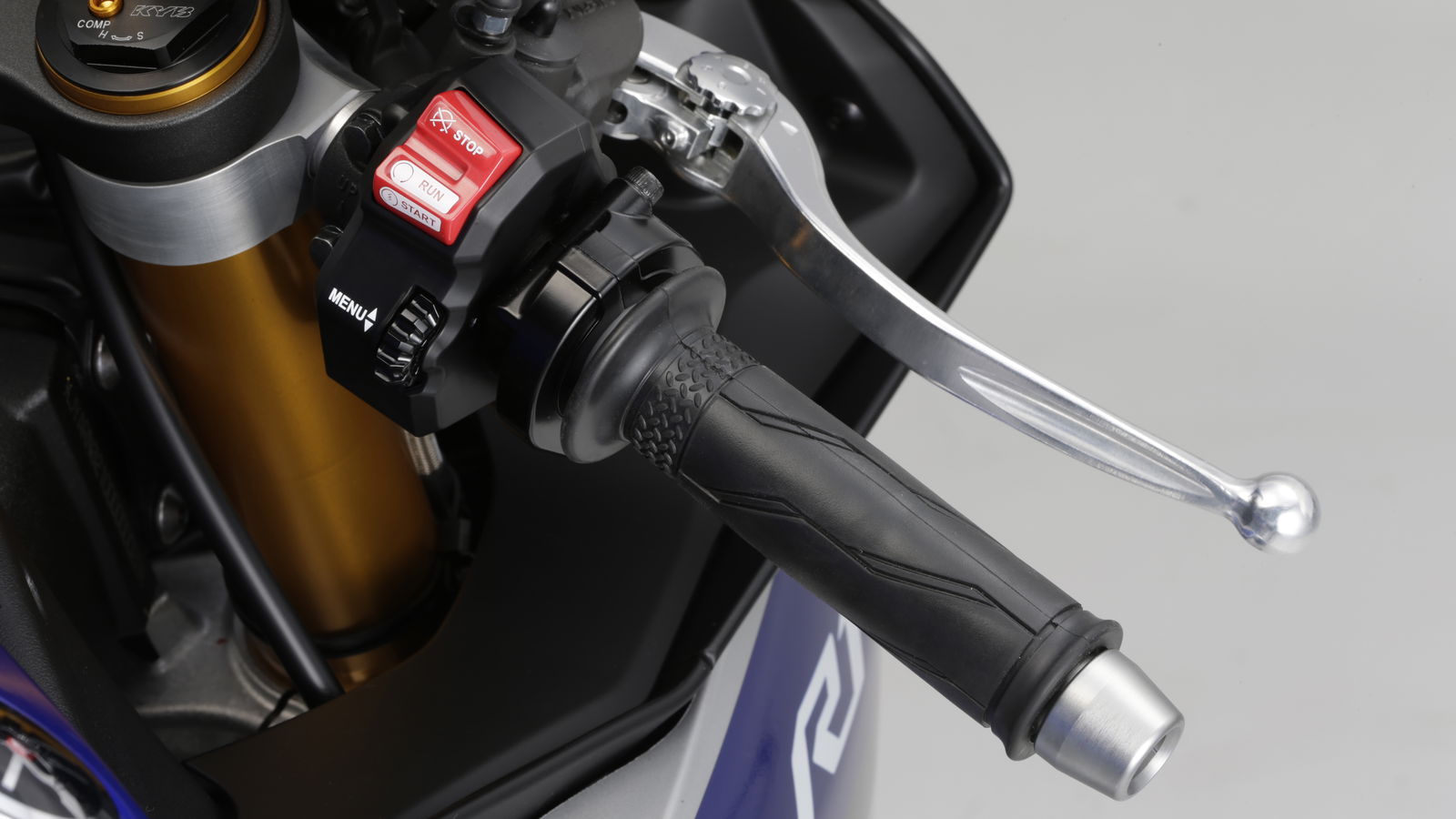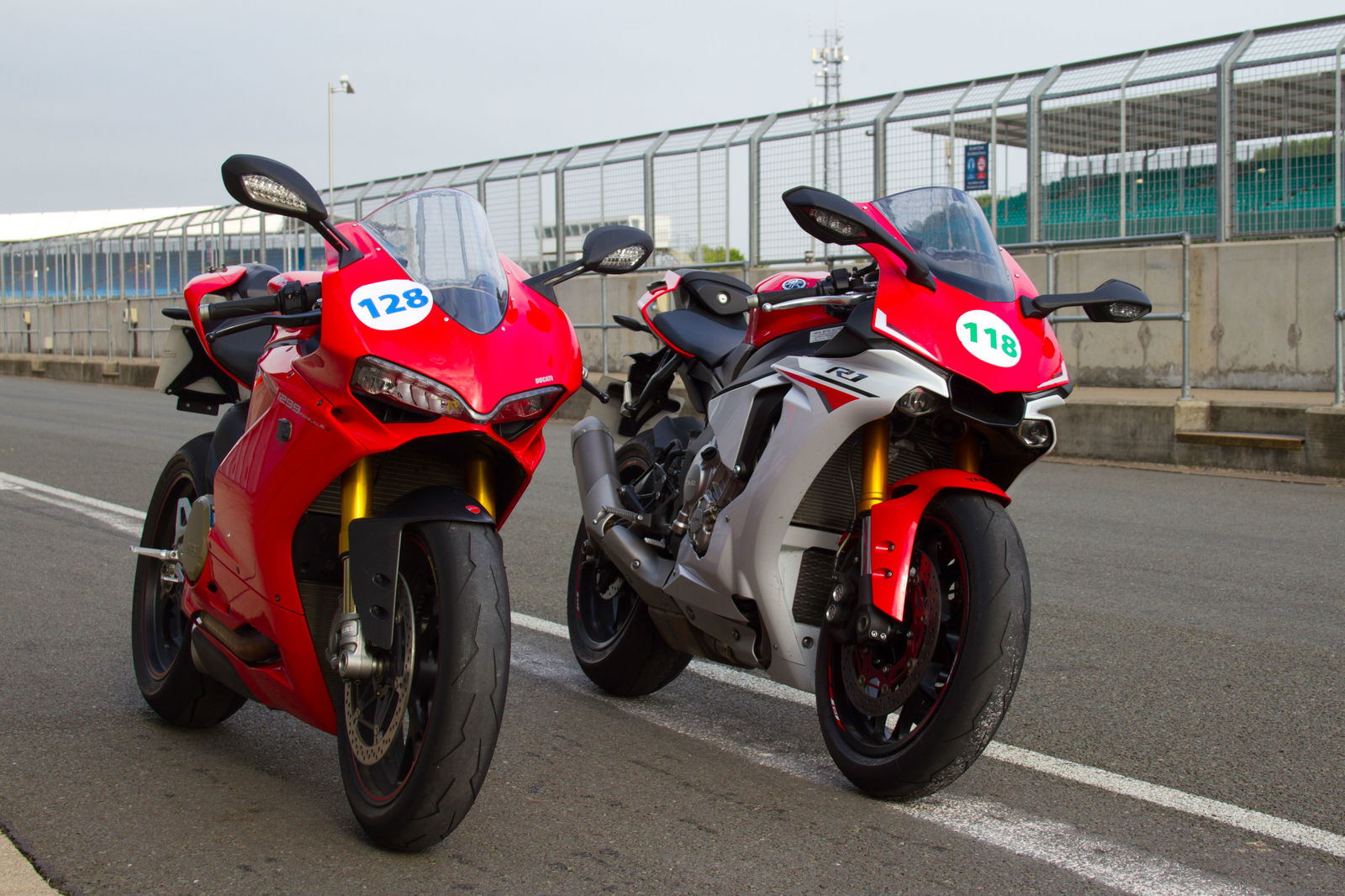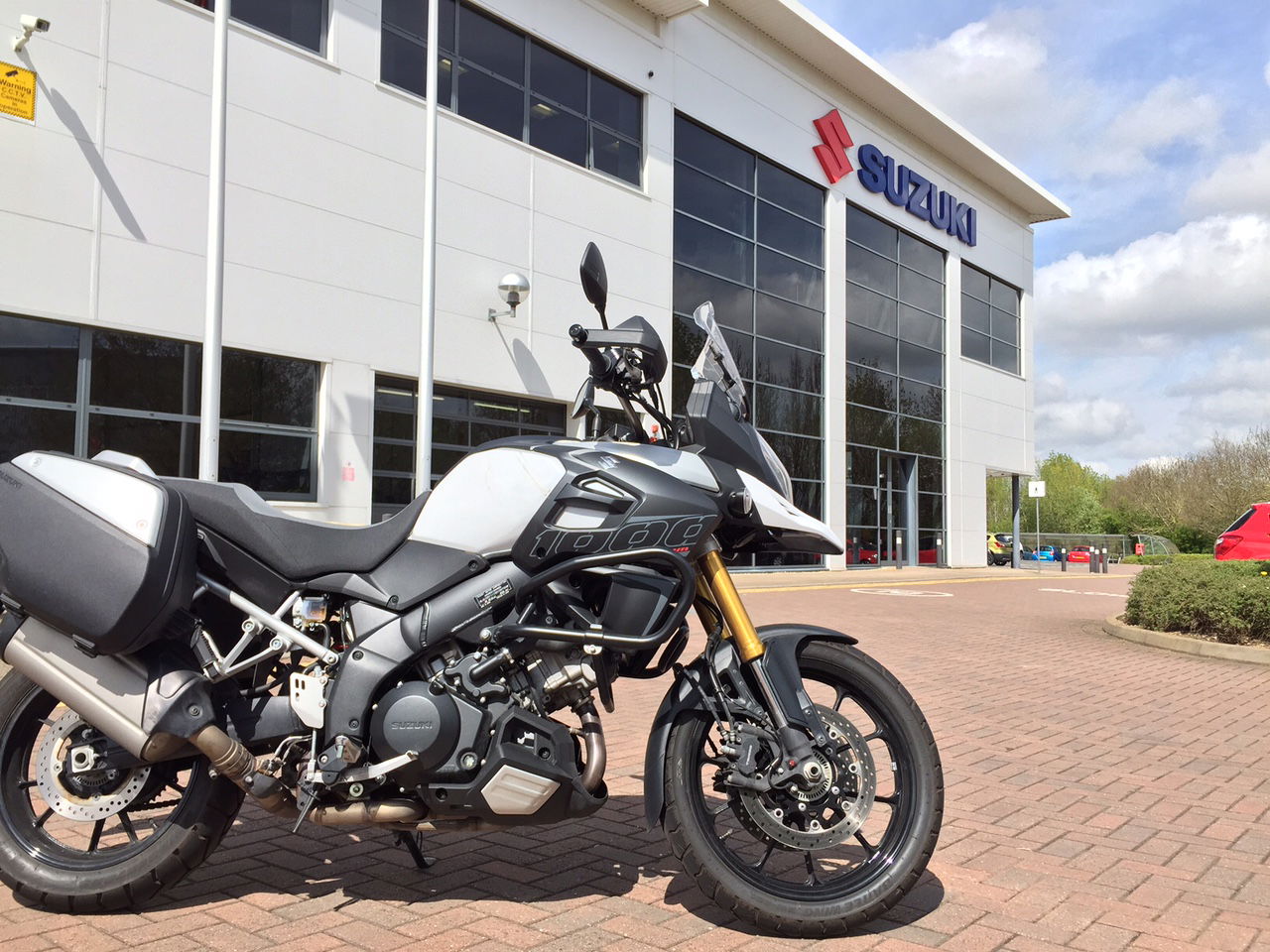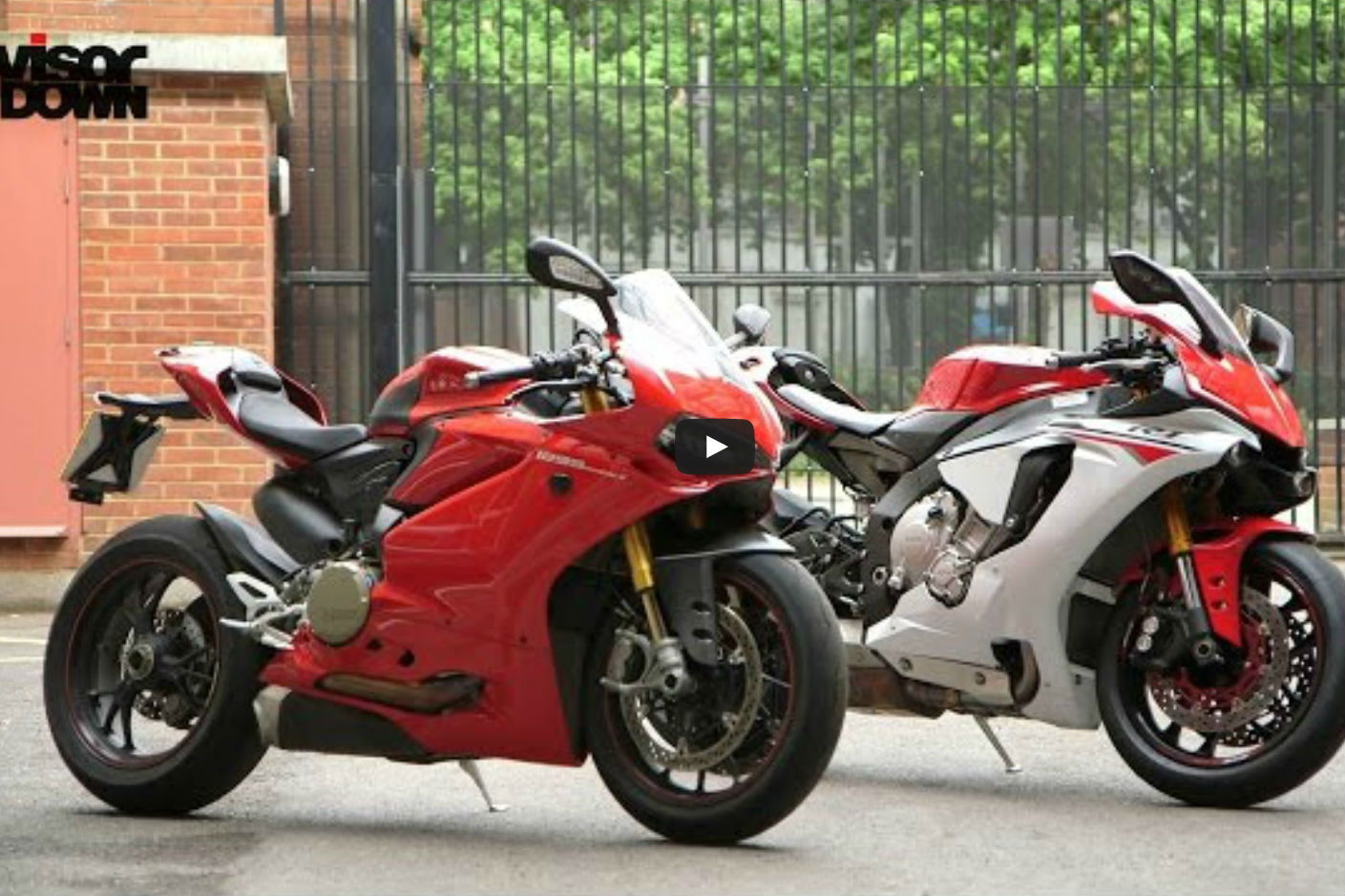Back-to-back test: Yamaha R1 vs Ducati 1299 Panigale S (2015)
The two hottest new sports bikes of the year, head-to-head on road and track

TWELVE months ago the superbike class was in danger of looking a little tired. A little lacking in recent significant development. So it’s nice to see that it’s gone absolutely stupid again, with enough new models to make a new stupid club: the 200hp+ club.
You’re looking at two of the stupidest members.
Yamaha’s R1 makes a claimed 200hp and weighs 199kg with a full tank. That’s 2hp more and 5kg less than a BMW S1000RR. It’s got a MotoGP-derived electronics package with traction control, slide control and ABS, all of which adapts to lean angle.
The Ducati Panigale is even more powerful and lighter, at a claimed 205hp and 190.5kg with a full tank. The electronics package doesn’t come with quite so many acronyms but it does include traction control, engine braking control and full-on cornering ABS, which lets you grab a handful of brake mid-corner without washing out.
These are not just two of the fastest production motorcycles ever made; they’re two of the safest.
We were probably a little unfair on the R1, because we borrowed a 1299 Panigale S for our back-to-back road and track test instead of the base-edition. The S version comes with semi-active Öhlins suspension front and rear, which automatically adjusts damping to riding conditions. To get semi-active Öhlins you must buy the limited-edition R1M, which costs £18,499. Except it doesn’t because you can’t buy it because it’s sold out.
So base R1 it was, with fully-adjustable KYB shock and upside-down fork. It costs £14,999, compared to £16,695 for the base-edition 1299 Panigale and £20,795 for the S.
A big price difference. Is the Ducati worth the £5,800 extra?
Of course both these machines are astonishingly fast. On a track day on Silverstone’s national circuit, nothing could answer them on the straights. The only thing that came close to either one was the other.
The R1 isn’t as torquey as I expected. On the road, at 4,000rpm in fourth gear, which is about 40mph, opening the throttle doesn't unleash overwhelming acceleration, even in the sportiest riding mode.
But the top end is outrageous. In track mode the rev counter only shows from 8,000rpm up. You're not even riding if you're not up there, it tells you.
When you get there the front lifts and the bars wobble as the revs tear towards the 14,000rpm red line. Shift up without shutting off, courtesy of the quick-shifter, and it does the same light-headed wobble again, and again, and again. Other riders can see when you change gear because every time you do, the R1 gains more ground on them.
The Ducati’s quick-shifter lets you change up and down. The R1’s only lets you go up, but I found the Yamaha’s system more useful. On several occasions, shifting up from fourth, the Ducati did something odd. It was as though it found a false neutral instead of fifth, then reverted to fourth, unsettling me and the bike. Visordown’s Kane Dalton, who also rode both bikes, ran into the same issue.
Upshifts on the R1 were more consistently smooth and as a result the system felt more intuitive, natural and confidence-inspiring.
When it came to clutch-less down-shifts on the Ducati, I wasn’t entirely convinced of the benefit to a rider of average ability like myself. Knocking down a gear without shutting off takes a greater leap of faith than changing up. It worked well but I doubt it made me faster, or helped me to focus on the business of riding.
Where the R1 is peaky, the 1299 S has a linear power-delivery, with immense strength everywhere in the range. It’s at least as merciless, reeling in other bikes with every upshift, but it feels more stable than the R1, less ready to shake its head. Both have electronic wheelie control but Ducati’s can keep the front end on the ground where R1’s only affects rate of lift.
On either machine you need a lot of braking power as the end of a straight nears, and both have it.
The Ducati’s more sophisticated suspension gives it a stability advantage here too. The R1 felt squirmier under hard braking, even with a couple of clicks of preload added to the fork. A couple of times the rear wheel locked in response to aggressive downshifts, despite the slipper-clutch, which is intended to reduce that tendency. The R1 also has Yamaha's ‘Unified Brake System’, which should aid stability by adding a bit of rear when the front is applied.
The Ducati has a slipper-clutch, engine braking control and an automatic throttle-blipper, and between them they make it more difficult to accidentally lock the rear on corner approach.
Despite that, I still felt more at home on the R1. It's a smoother experience than the rumbling mid-range of the Ducati. The R1's crossplane-crank engine has a rumble of its own compared to other four-in-lines but not compared to the Panigale. The drive builds more moderately, but still quickly enough to transform into that devastating top-end as you exit a corner.
It’s extremely compact. The Panigale is narrower at the tank but the R1 is shorter, with a wheelbase of 1,405mm compared to 1,437mm. The bars are close and the screen and clocks right under your nose. It’s a position for focussing on riding.
Several other riders on the track day complimented the sound of the R1. It's just as involving a noise as the Ducati makes but the volume is lower, and the relative quietness liberated a little bit more of my attention to concentrate on the job, on getting to the right part of the track at the right time, and braking and turning at the right moment.
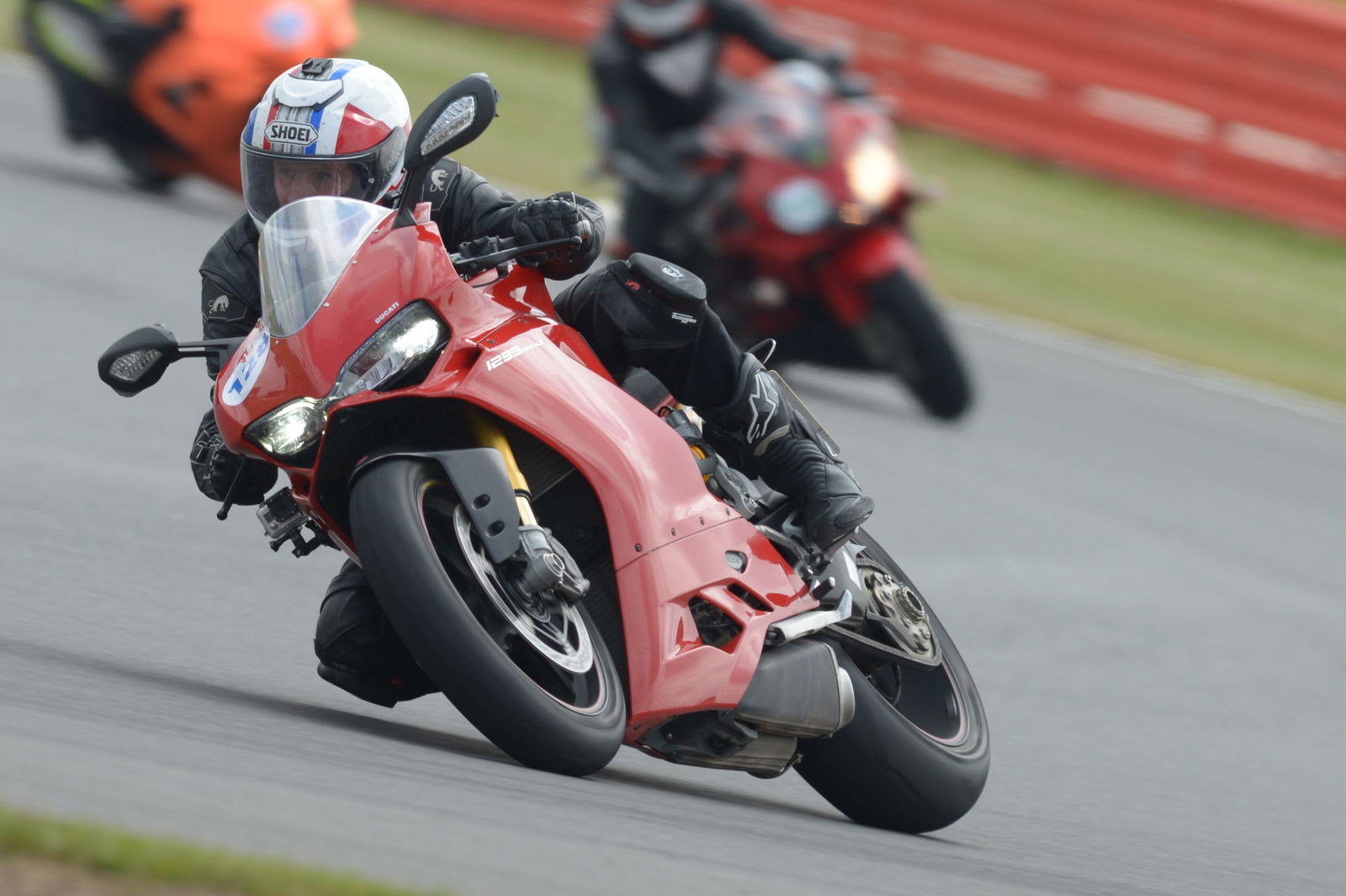
On the road the Yamaha felt more conducive to smooth and fast progress for the same reasons it had on the track: its milder, flexible mid-range and aggressive peak. And here its riding modes gave it a new dimension of practicality.
In the softest mode, offering the most forgiving settings, it’s a new animal. The throttle response is much more sedate, feeding in the drive smoothly from nothing. Power-delivery is softer, better suited to traffic or simply a more leisurely pace.
The R1’s easy-folding mirrors are as useful for filtering as they are on track. Last year’s Panigale 1199 had folding mirrors but for some reason the 1299 has lost them.
There are four modes on the R1, each with its own pre-settings for power, traction control and slide control. You can alter those pre-settings by navigating menus on the colour dash using toggle switches on the right bar. You can also use another set of toggle switches on the left bar to change settings as you ride, without entering menus.
It’s pretty baffling, as demonstrated by an online simulator. No doubt you’d get the hang of it after a year or two.
The Panigale S’ dash is no simple thing either. There are three pre-set modes which you can toggle between as you ride: Race, Sport and Wet. They change the ignition map, suspension damping, engine braking, cornering ABS, wheelie and traction control. There’s also an electronically governed Öhlins steering damper. As on the R1, you can manually set preferences within each mode.
I suppose an owner of one of these bikes would select their own bespoke settings in two or three modes and then just switch between them according to conditions, making the whole business a lot simpler than it seems at first.
But no setting-changes can make the Panigale S feel as civilised as the R1 can be.
Both bikes get really hot in town. The R1 reached 109° at one point. I hadn’t been stuck in traffic for long. I was just waiting for some lights to change, and the day was warm but not hot.
The Ducati seems worse. Even without much traffic, just riding at town speeds had our test bike overheating. The Ducati reached 107° That’s not as hot as the R1, but on the Yamaha the fan had come on and cooled it down. On the Ducati, two warning lights came on, one indicating it was overheating and the other saying ‘fan’.
We asked Ducati if that meant the fan wasn't working and the firm later clarified that it did suggest a fault: the warning lights were not only telling us the bike was running hot but that the fan had failed. The firm says it's an uncommon fault.
The fan, was not the only electrical fault the Panigale S suffered during the week we had it. On the way to the track, riding behind Kane on the motorway, I watched as one side of the rear light started to flicker, then went out. Then the brake light came on and stayed on.
The intermittent flickering/brake light problem continued until we returned the bike to Ducati that afternoon, and was noticed by other riders at the track day.
The R1 has its own idiosyncrasies. It’s slow to start. Push the starter button and the motor can turn for a couple of seconds before the engine comes to life. The clutch biting point is oddly vague. You tickle the throttle, ease out the lever and wait for it, with little sense of when it’s coming.
And the seat is high. An average-height rider like me will be on tip-toes with both feet on the ground, making the R1 more awkward at low speed than the Panigale, whose seat is at a more reasonable height.
But I’d rather live with those things, and the R1’s more flexible overall nature, than the rumbling, overheating brute with a flickering tail light. I know some people will love the Ducati precisely because of its more inflexibly brutish nature.
I asked earlier if the Panigale S is worth the £5,800 more than the R1. The answer, for a practical-minded rider of average ability like me, is no.
But of course not everyone is practical-minded or average, which is why I was joined for this test by Kane, who has raced in the Manx GP…
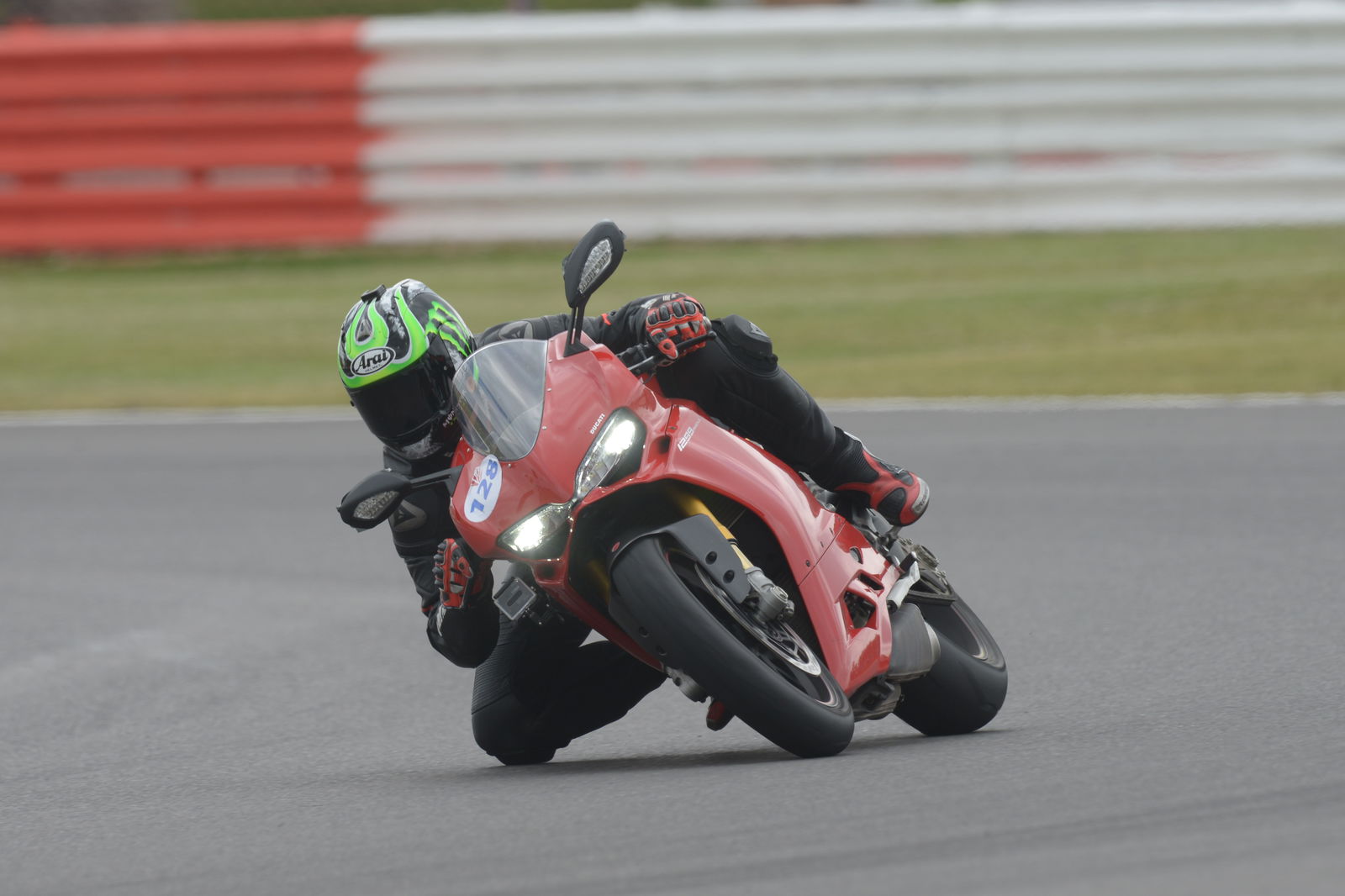
Kane’s verdict:
Everything I would put on a race bike is already on the Ducati: the semi-active Öhlins suspension, the Brembo brakes. And I love the down-shift auto-blipper.
Both bikes are compact and designed to turn fast. They have aggressive geometry which is perfect for the track and fast road riding.
The Ducati is slightly let down by a rougher feel at lower speeds, but it always exudes drama. The huge torque lets you fire the bike from corner to corner.
But the R1 is smoother at low speed and all the way through the rev range. On track the real power kicks in at over 8,000rpm.
The Ducati has a lower front fairing and I felt the wind buffeting my shoulders on track. The R1’s fairing is wider and higher, with a bigger bubble screen. It’s easier to tuck in. The R1’s also really compact. From the seat it reminded me of a Yamaha RV500.
Both bikes feel really light to ride. The Ducati is narrow in the middle which helps you lock into it with your knees. The R1 is a little wider but also offers a great, stable riding position – it handles like a 600.
The Ducati feels more stable than the R1, largely down to the semi-active suspension and electronic steering damper.
Both bikes’ electronics gave me the confidence to get really hard on the gas just after turning in. The wheelie control on both meant I could be flat-out to the red line in every gear without thinking about throttle control. The R1 shook its head a touch on the red-line at gear changes but it was nothing a little suspension tweaking wouldn’t iron out.
The Ducati suffered some rear tire tearing which meant we had to take a little rebound off the standard race map settings. The R1’s wore perfectly as it should on the stock setting.
On the way into corners the Ducati’s downshift auto-blipper meant the bike was stable and controlled; the R1 was a little looser in comparison.
On the Ducati you feel like you’re riding faster, with the noise of that big Italian V-twin. But I think that’s an impression, and the reality is that I would be consistently faster on the smoother R1. It’s as though there’s not as much going on and it gives you more time to think.
The Ducati is beautiful, stylish, exclusive, and exceptionally fast. But if you want a bike that offers MotoGP styling, all-round capability, and ballistic performance, it’s the R1.
WATCH OUR YAMAHA R1 VS DUCATI 1299 PANIGALE S VIDEO REVIEW
Model tested: 2015 Yamaha YZF-R1 and YZF-R1M
Price: £14,999 plus on-the-road charges (R1M £18,499+OTR)
Engine: 998cc in-line four
Power: 200hp @ 13,500rpm
Torque: 83lbft @ 11,500rpm
Wet weight: 199kg (full tank)
Frame:Aluminium Deltabox
Tank capacity: 17 litres
Seat height: 855mm
Colours: red/white, blue/silver
Available: now
Model tested: Ducati 1299 Panigale S
Price: £20,795 plus on-the-road charges (base model £16,695+OTR)
Engine: 1285cc V-twin
Power: 205hp @ 10,500rpm
Torque: 106.7lbft @ 8,750rpm
Wet weight: 190.5kg
Frame: Monocoque aluminium
Tank capacity: 17 litres
Seat height: 830mm
Colours: red
Available: now
Read our Yamaha R1 and R1M first-ride review
Read our Ducati 1299 Panigale S first-ride review
Read our BMW S1000RR first-ride review
Read our Aprilia RSV4 RF first-ride review
Read Kane's Ducati 1299 Panigale S UK road test
Watch Kane's video review of the Ducati 1299 Panigale S.
Thanks to Silverstone Bike Track Days
